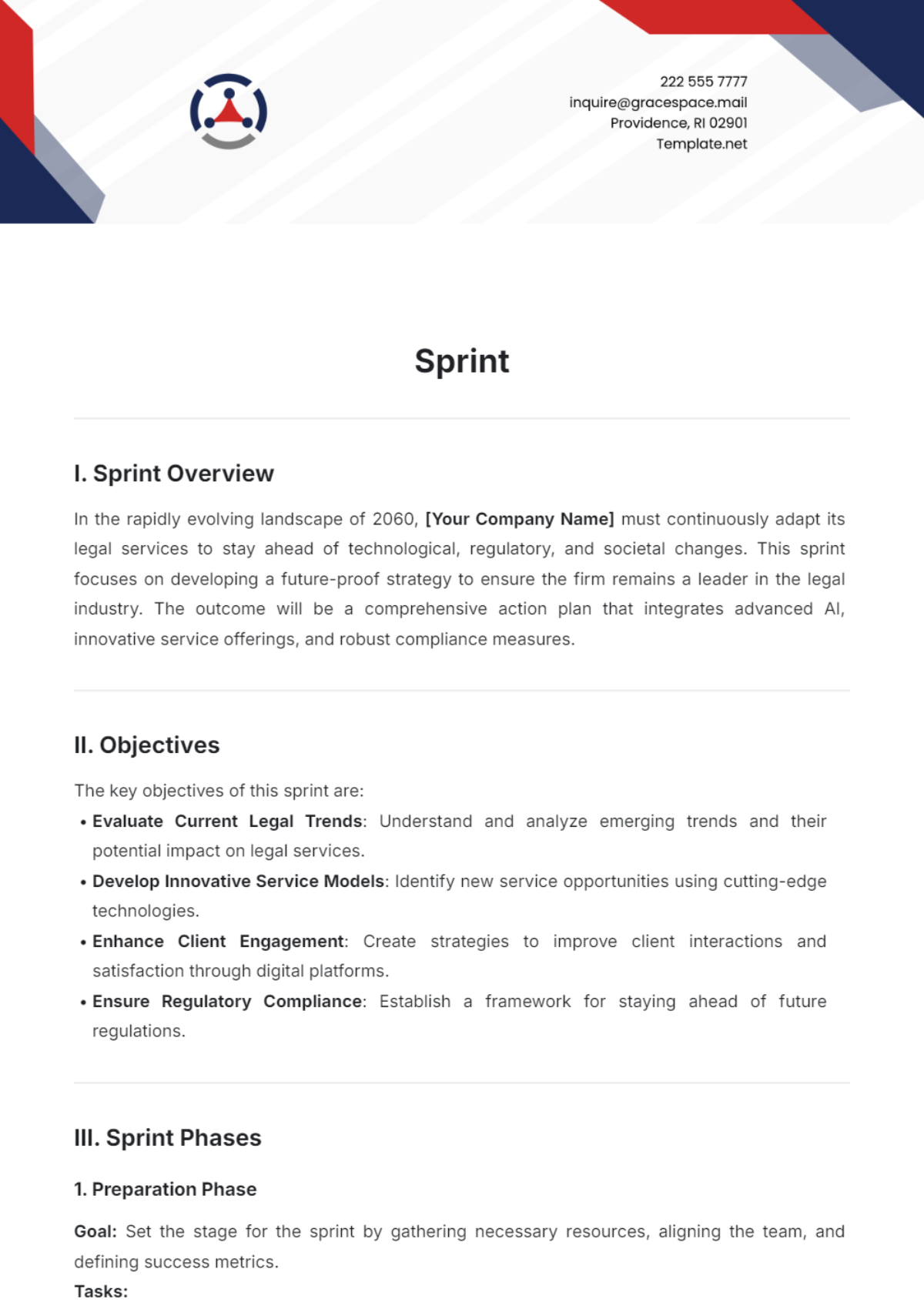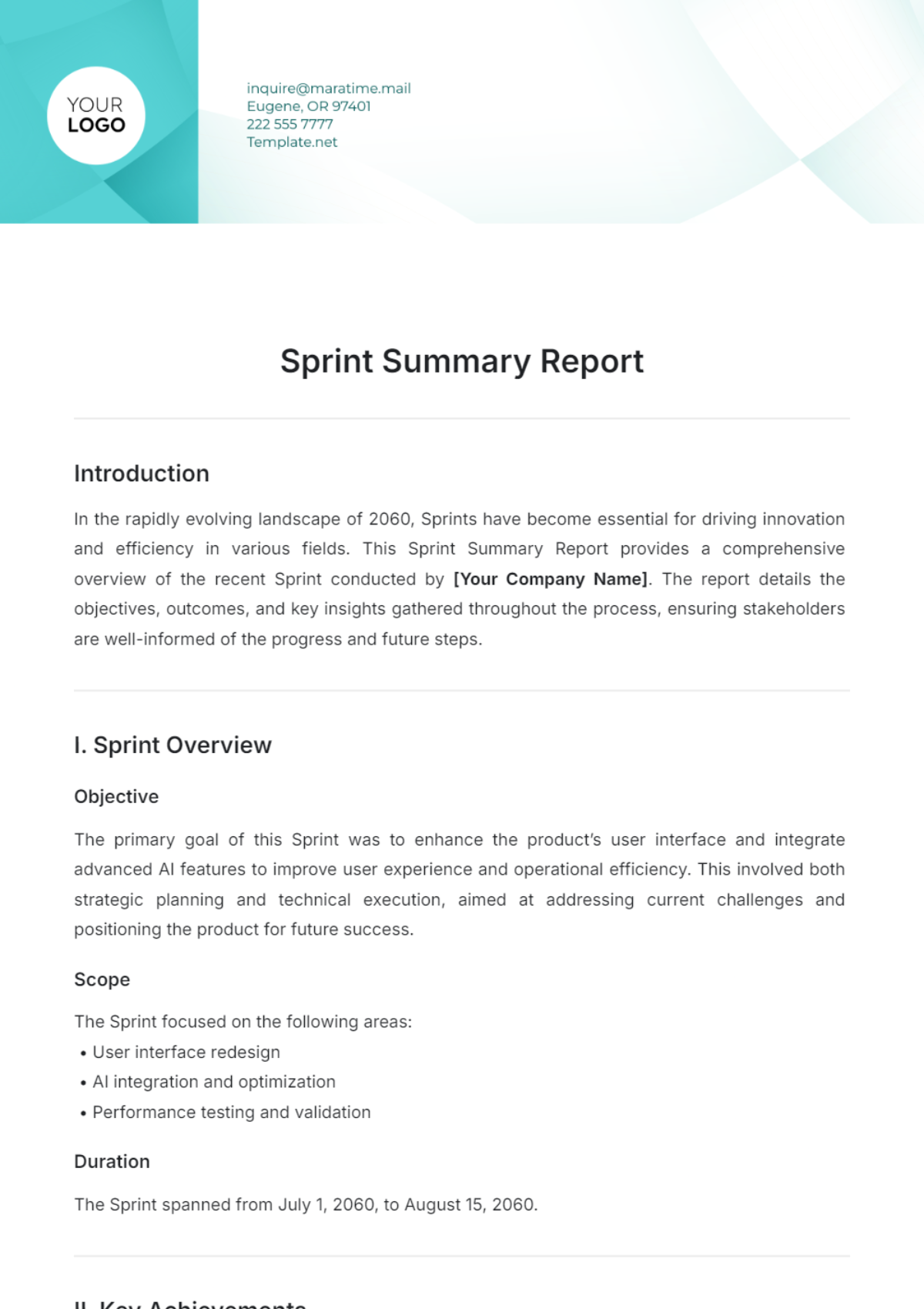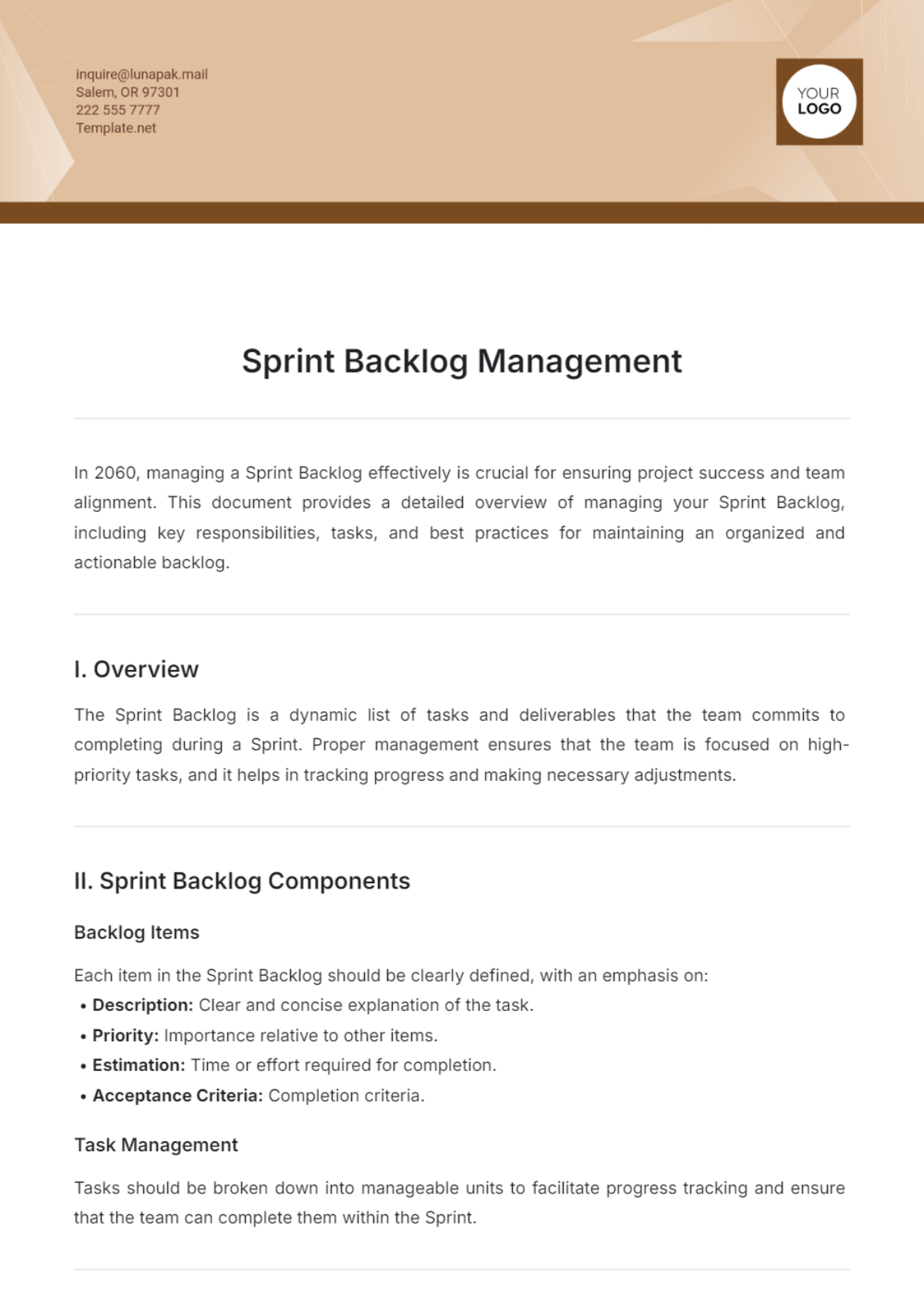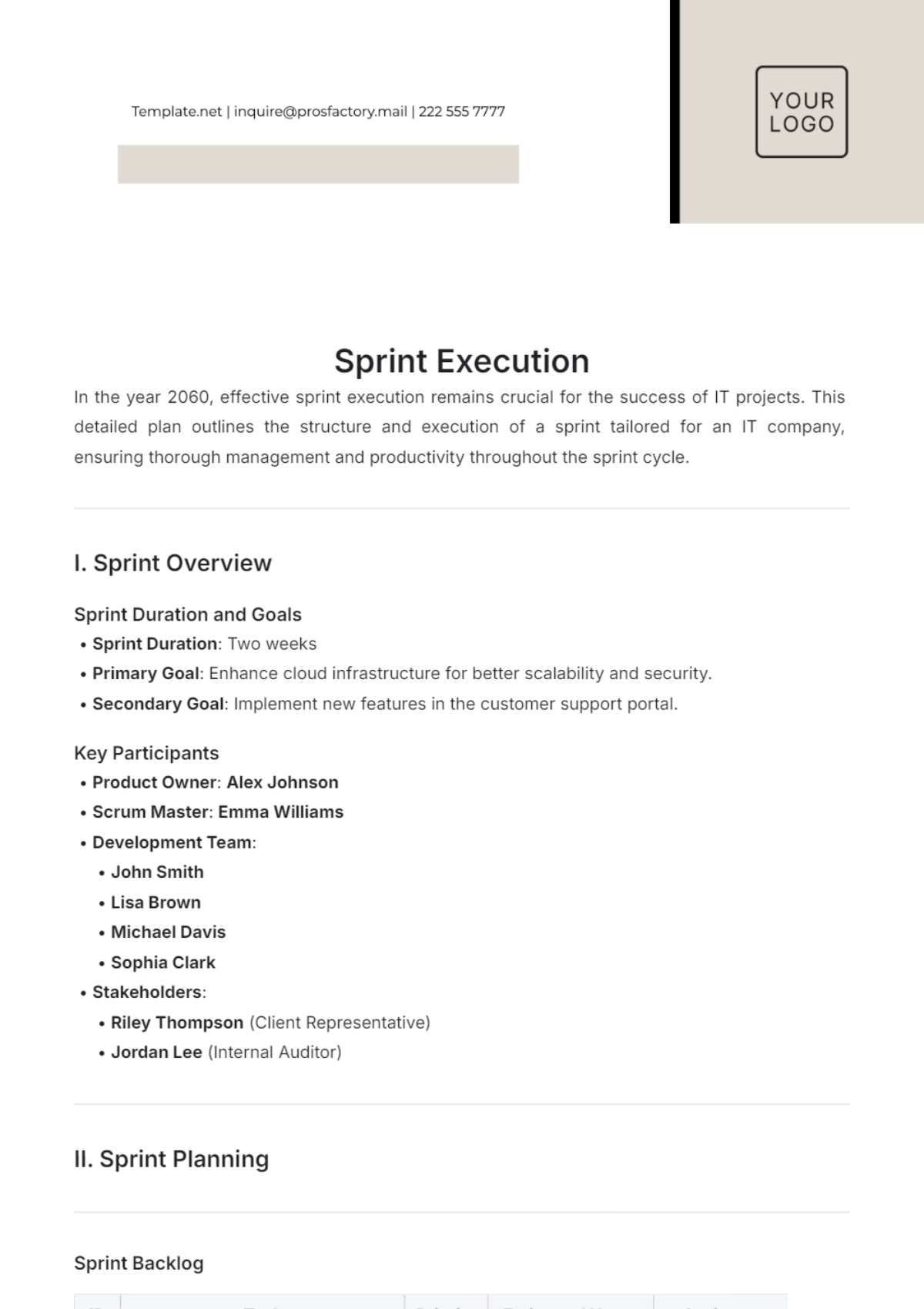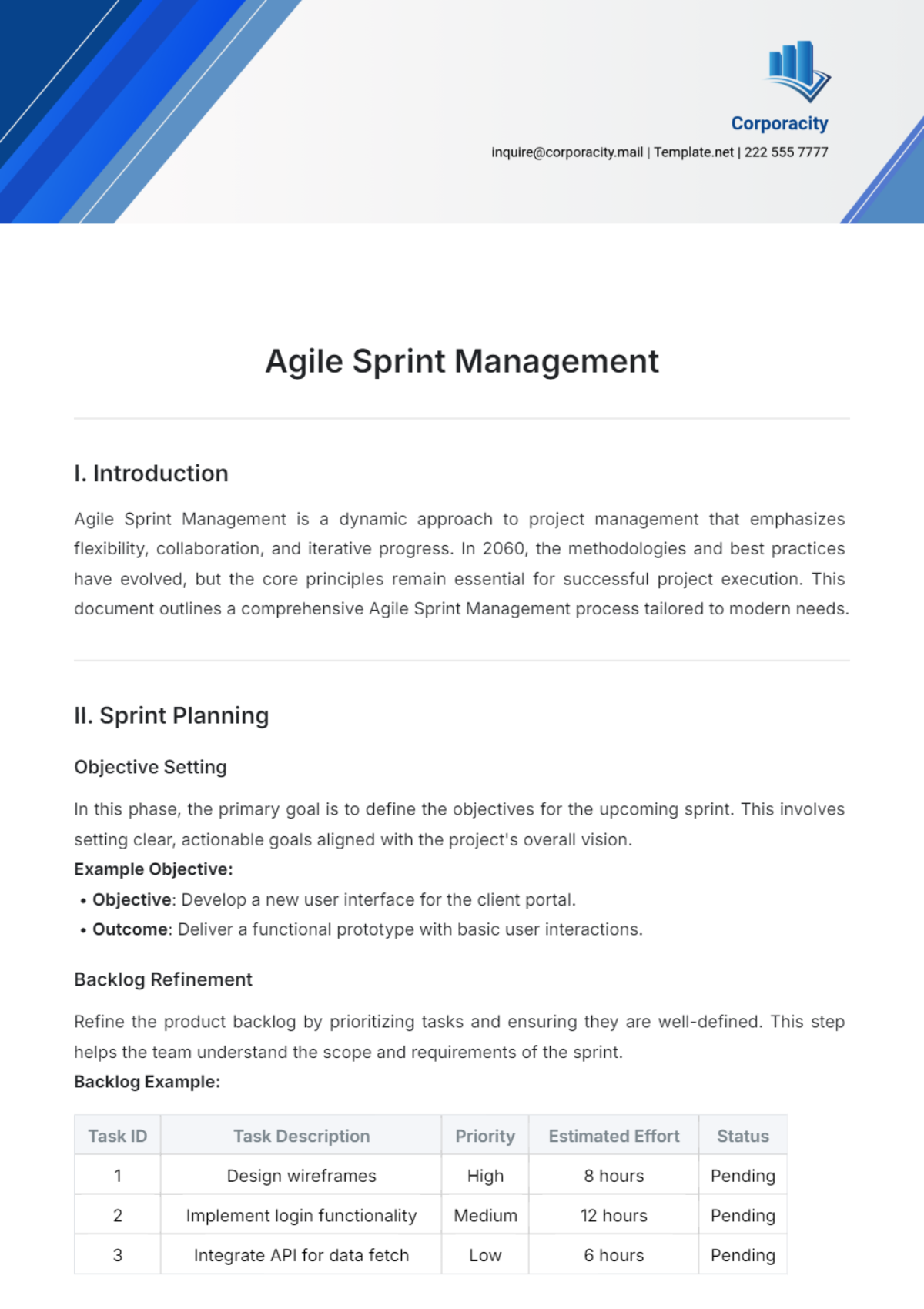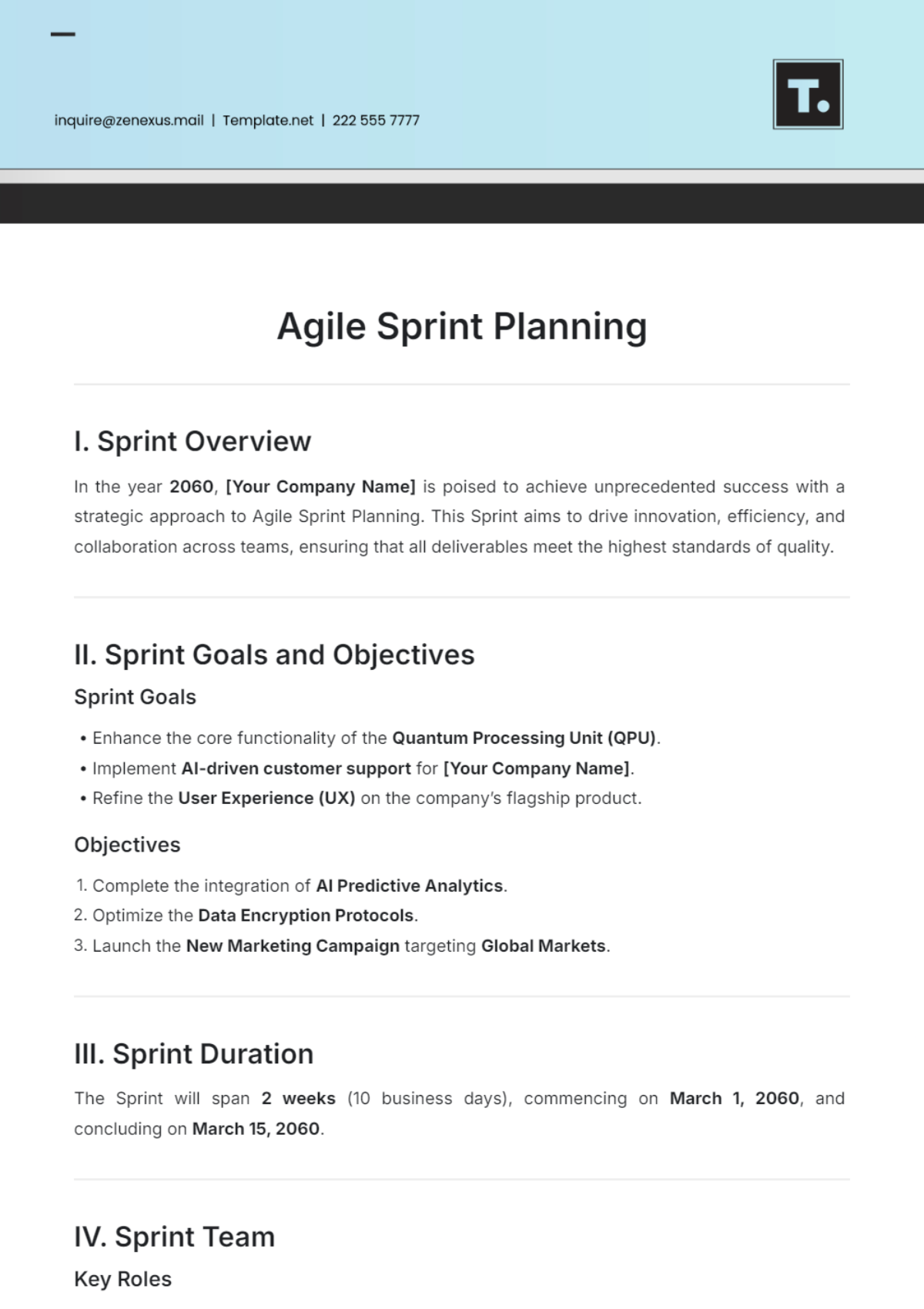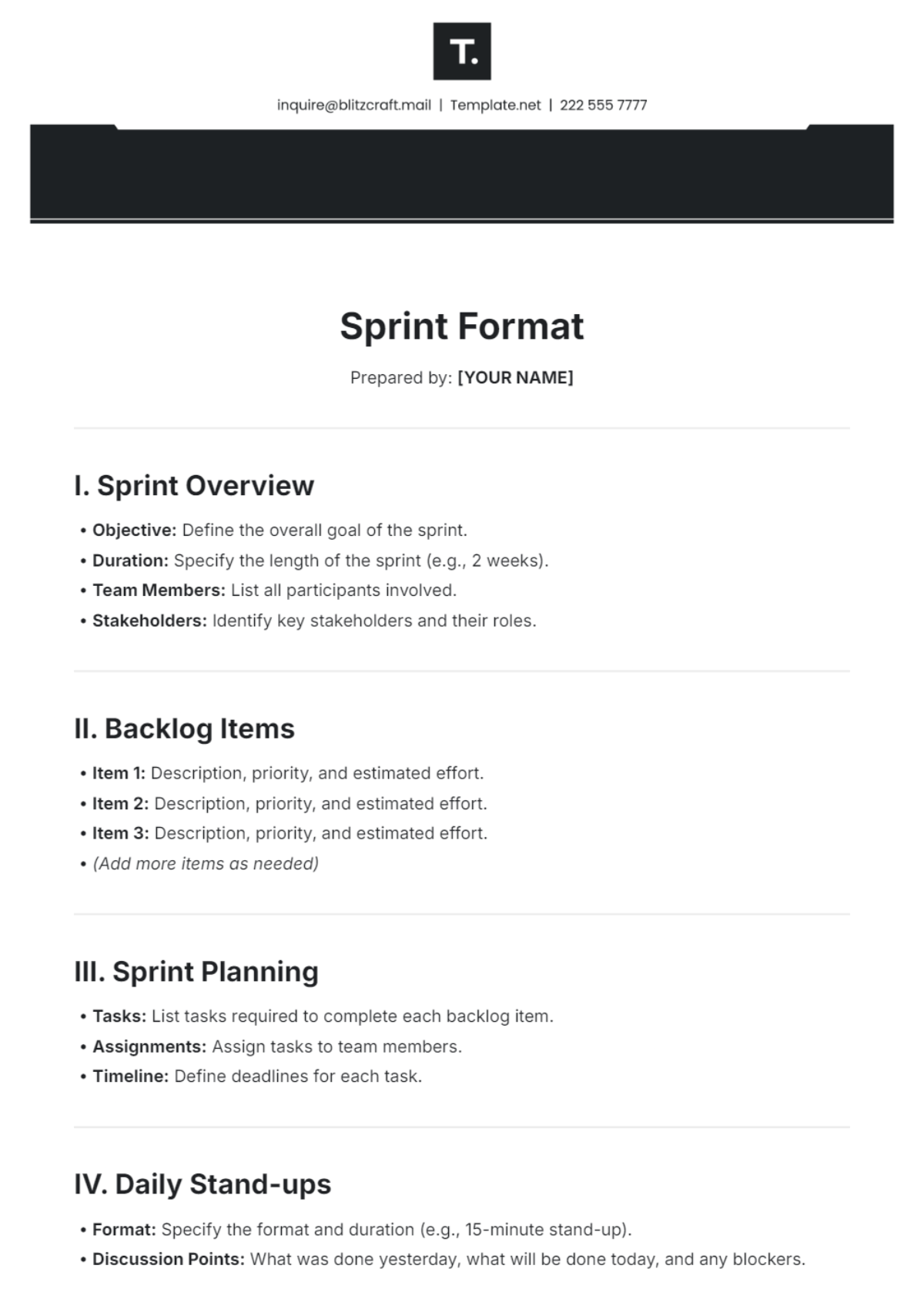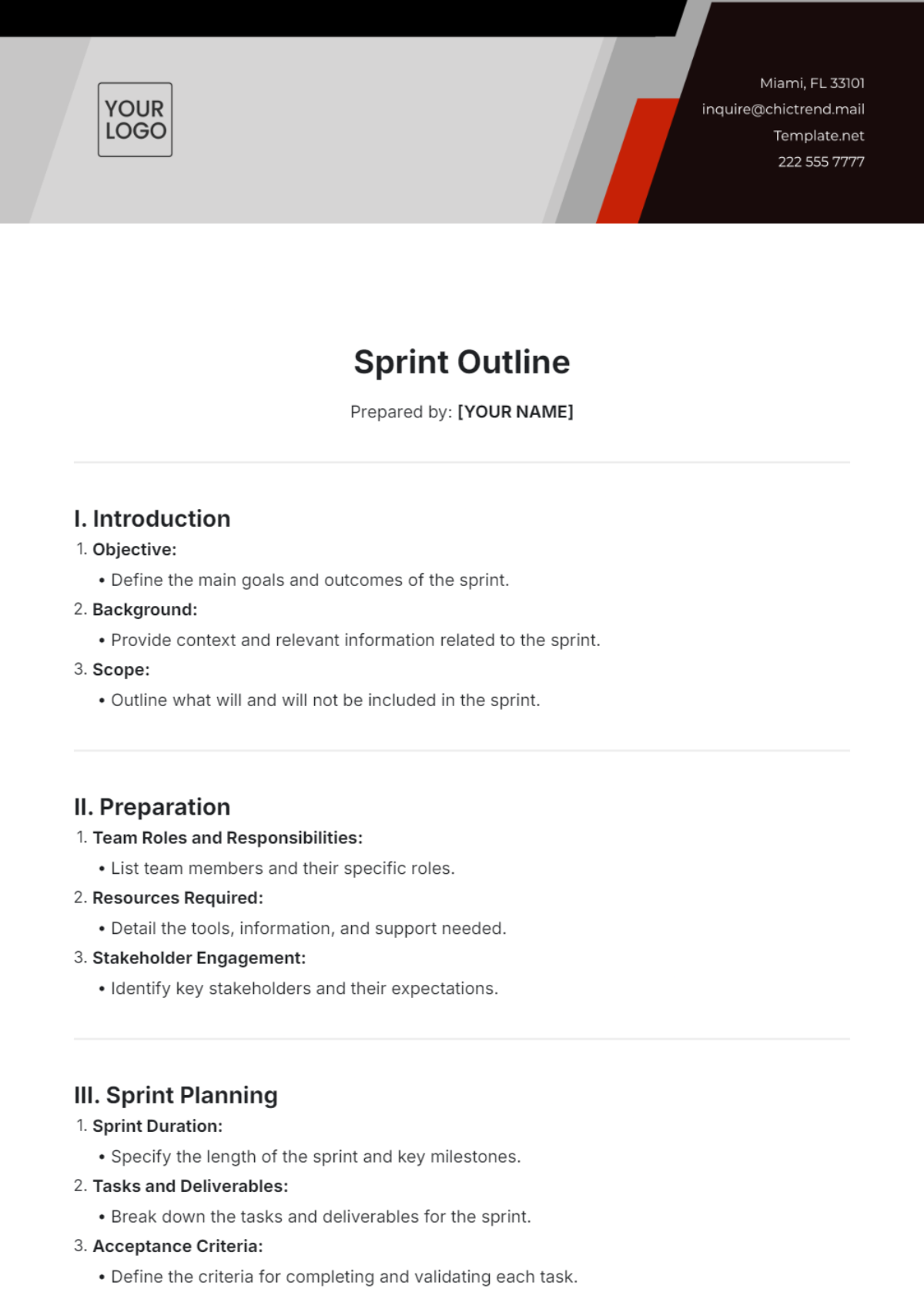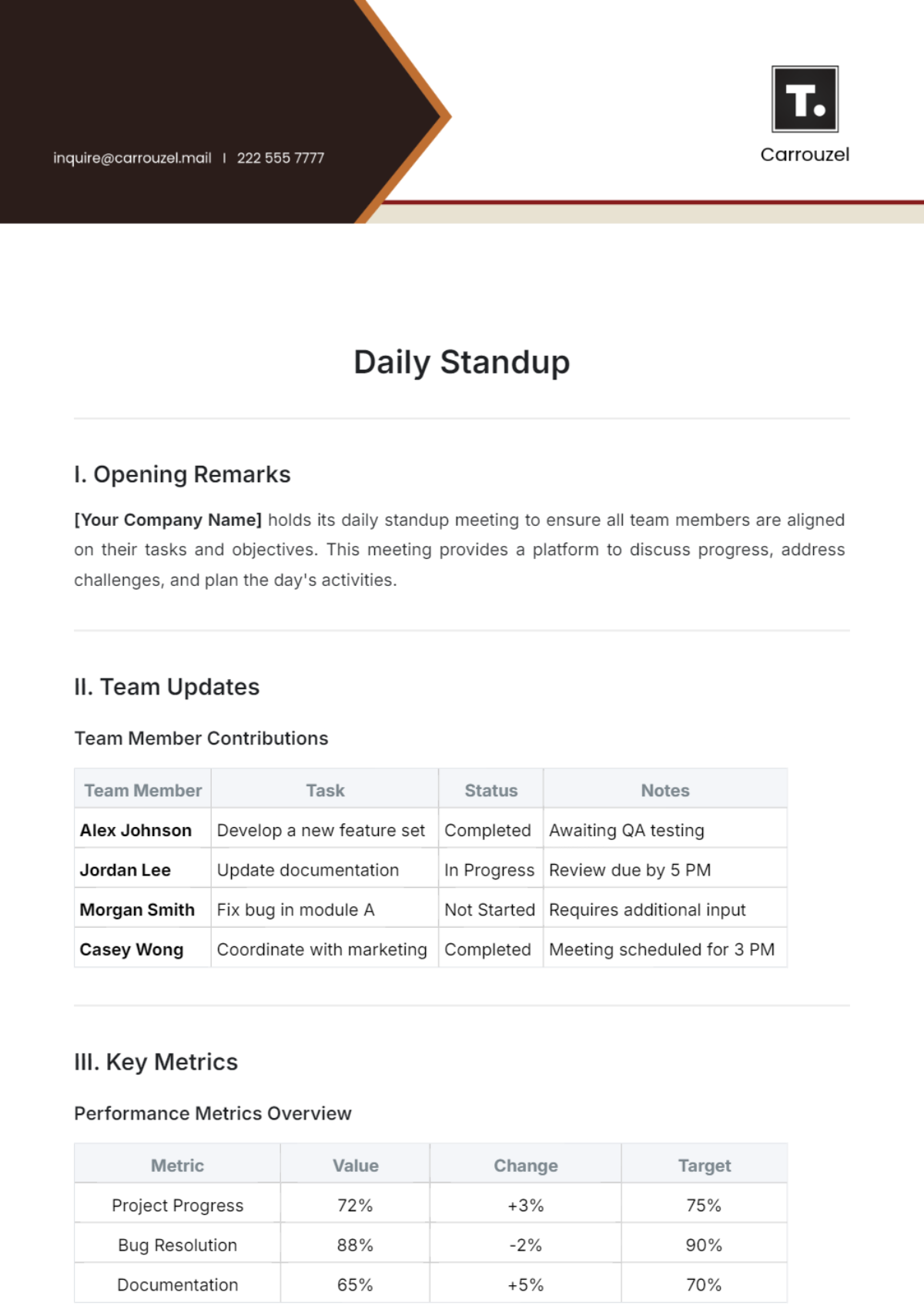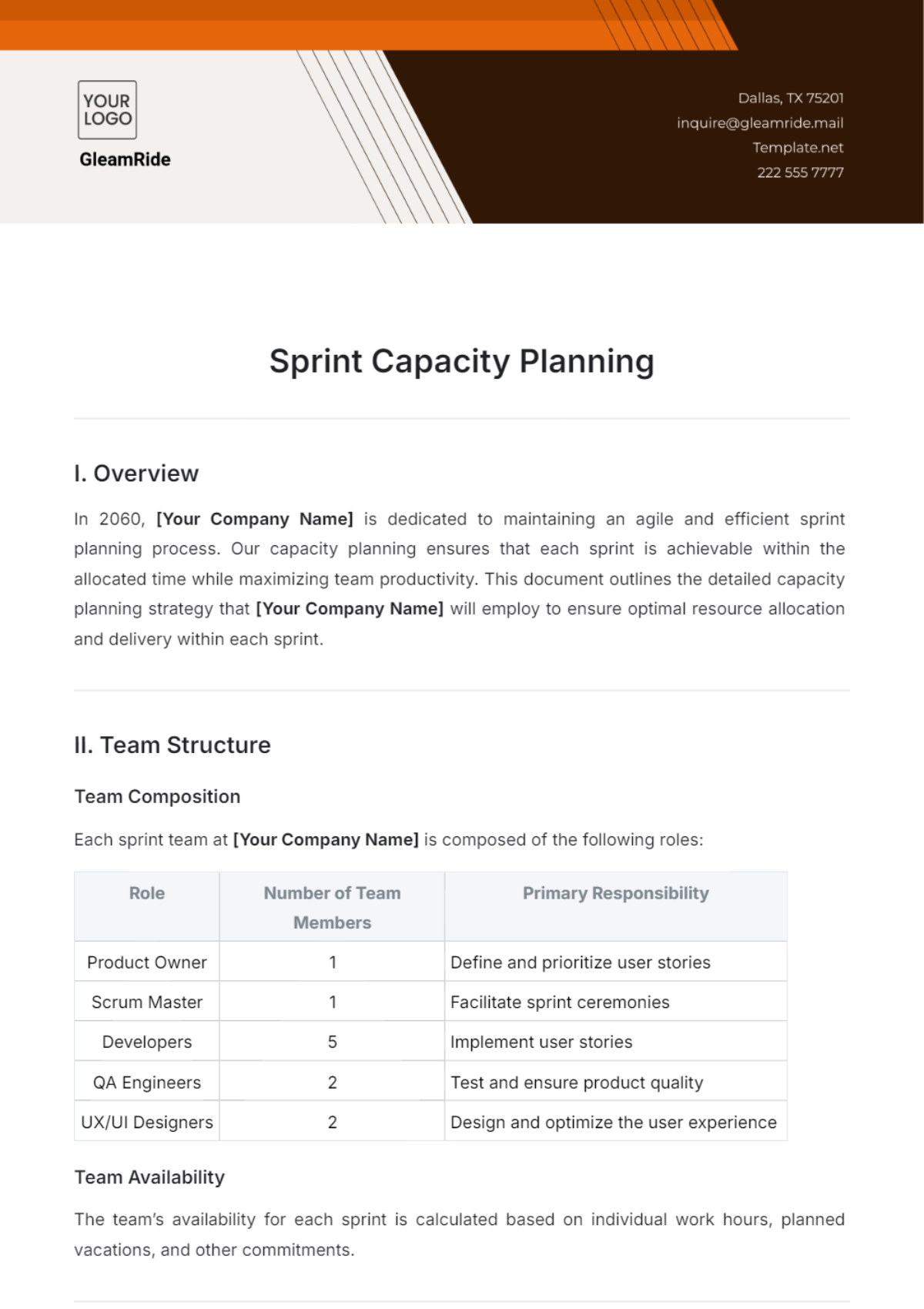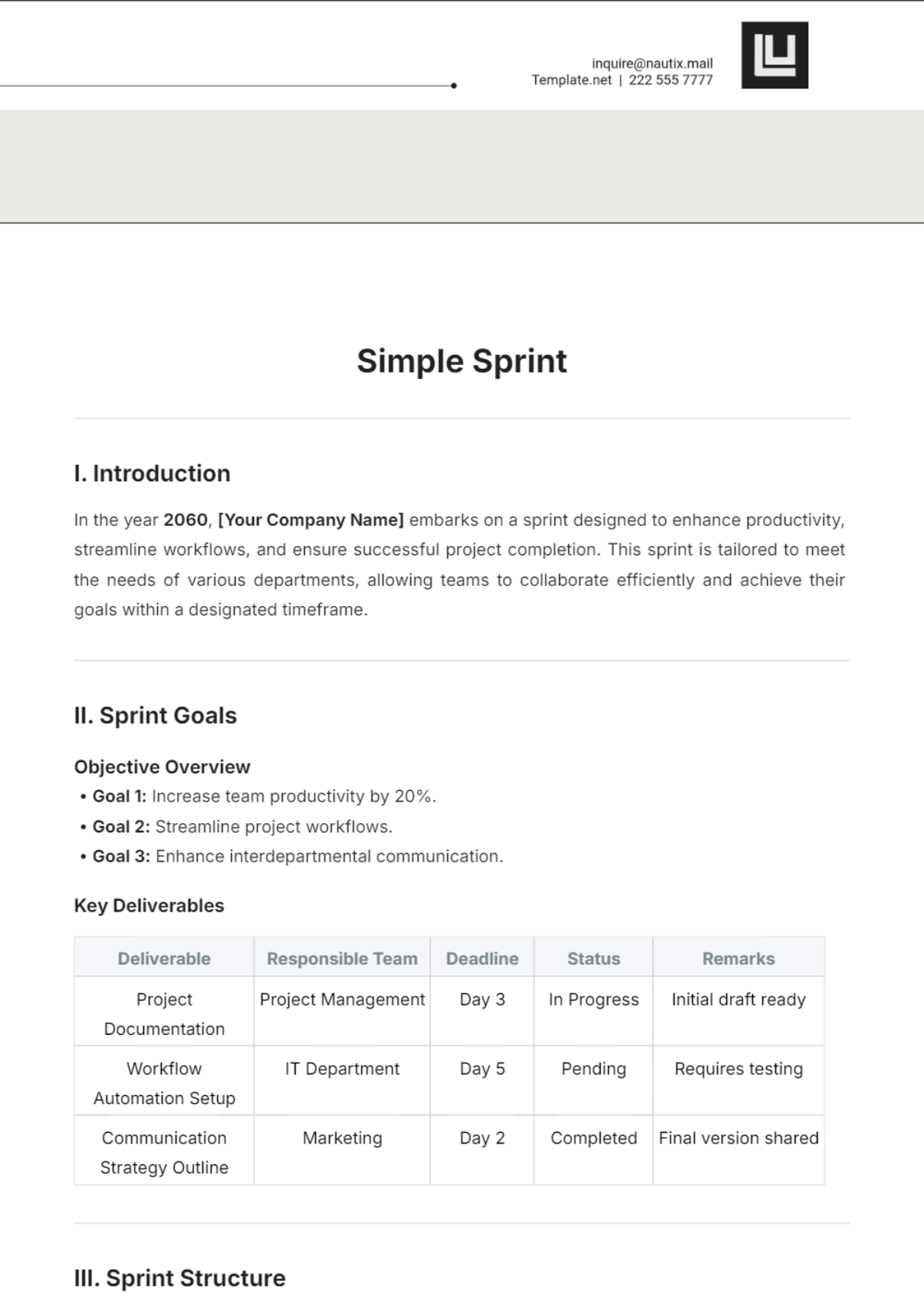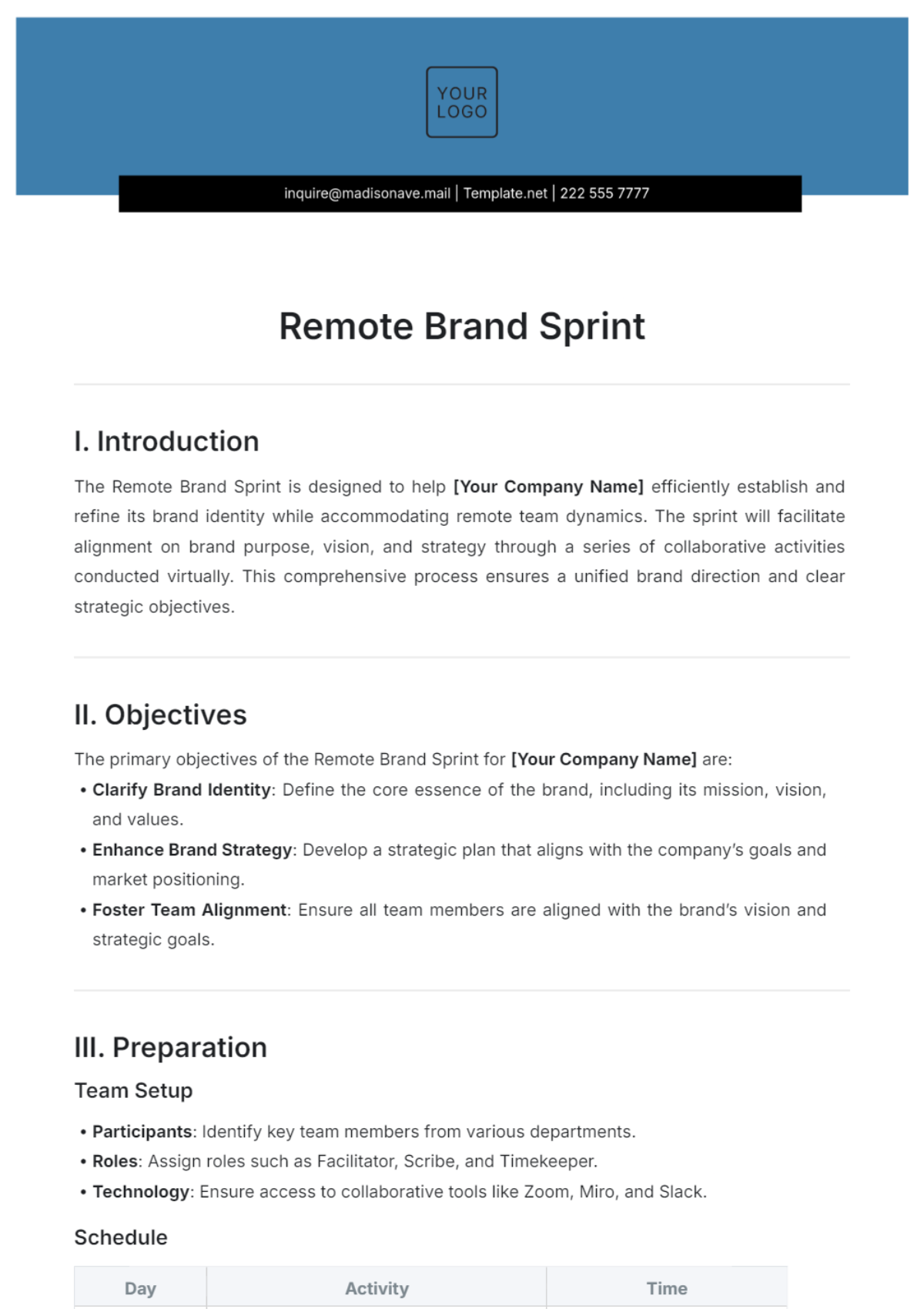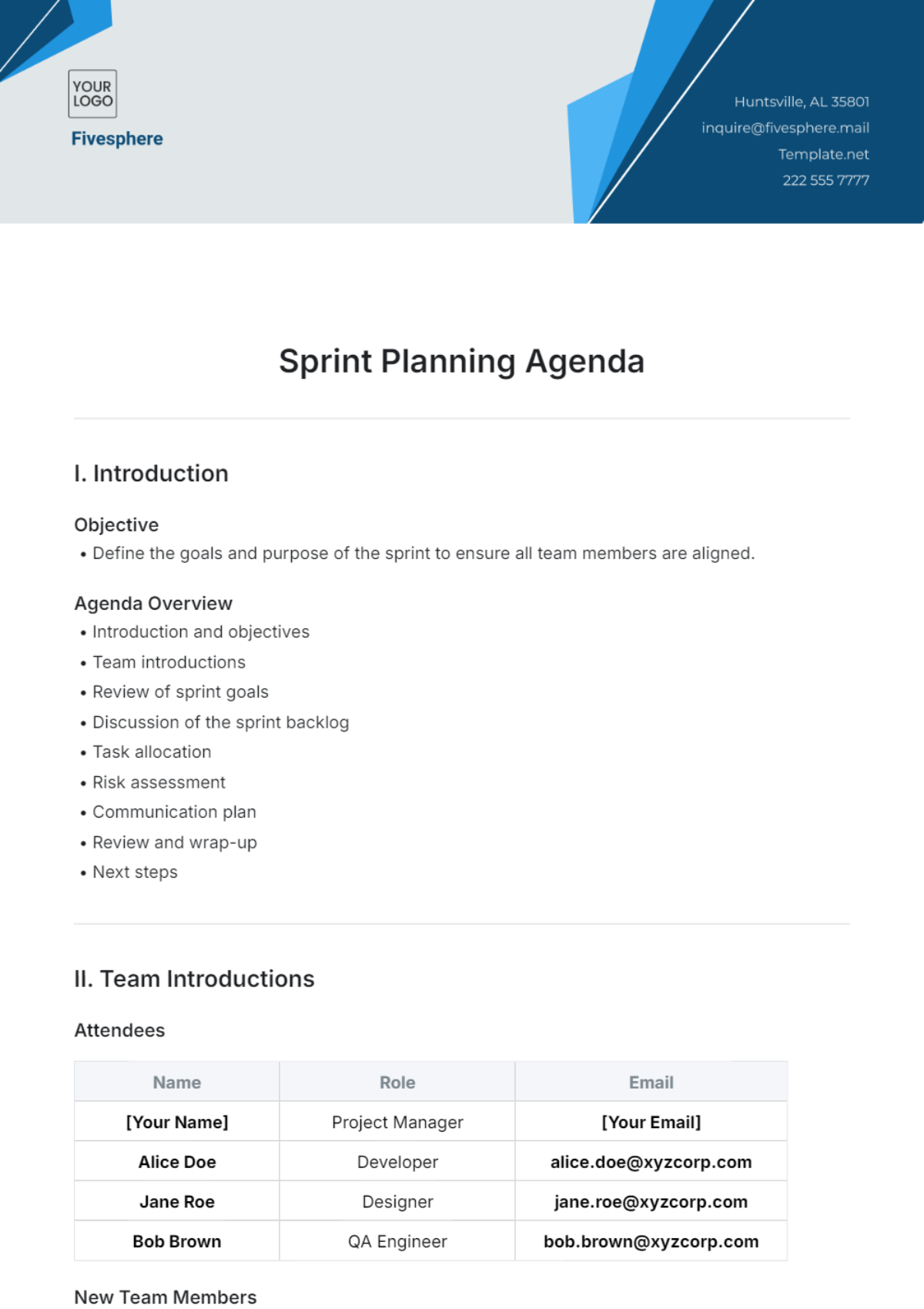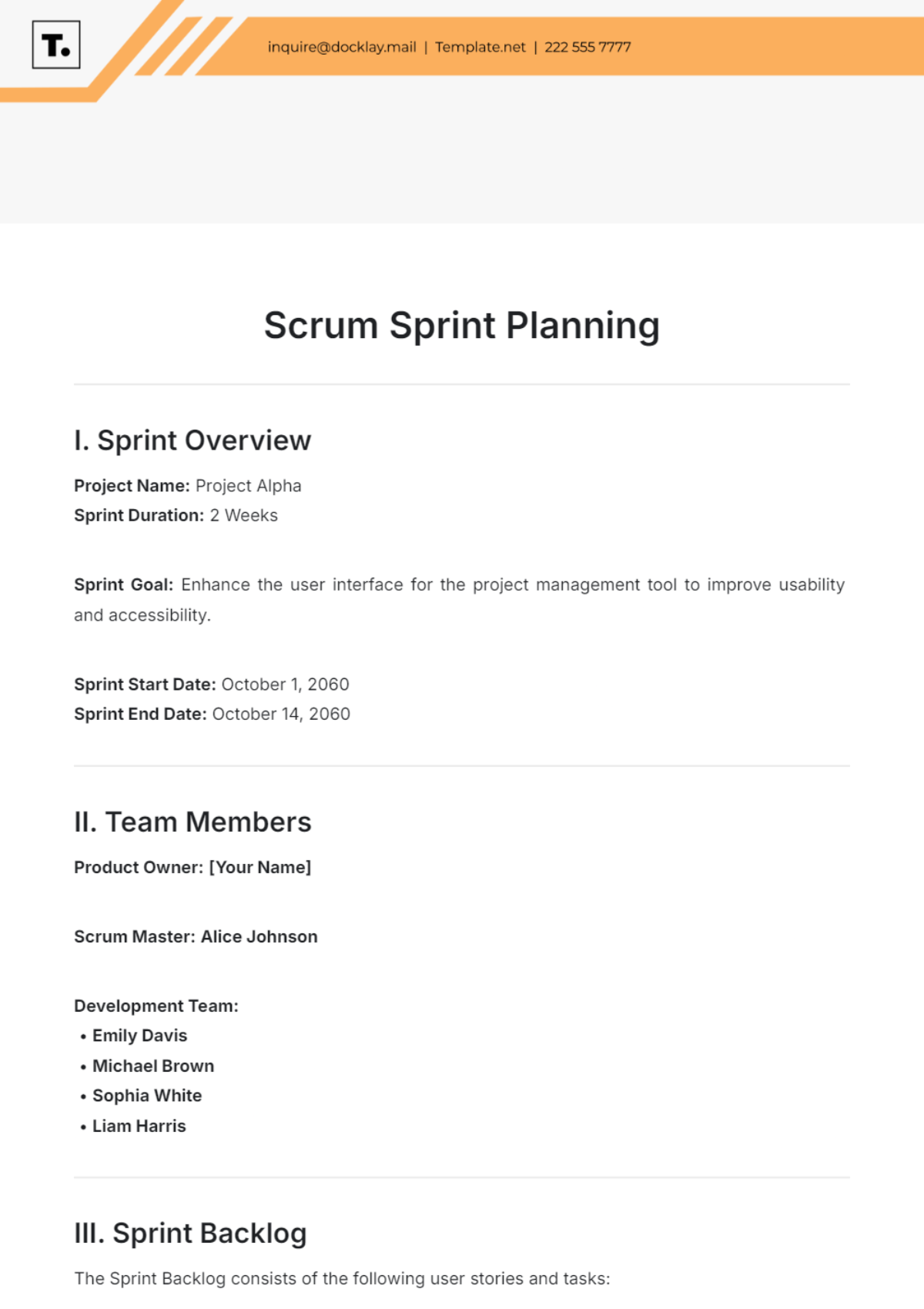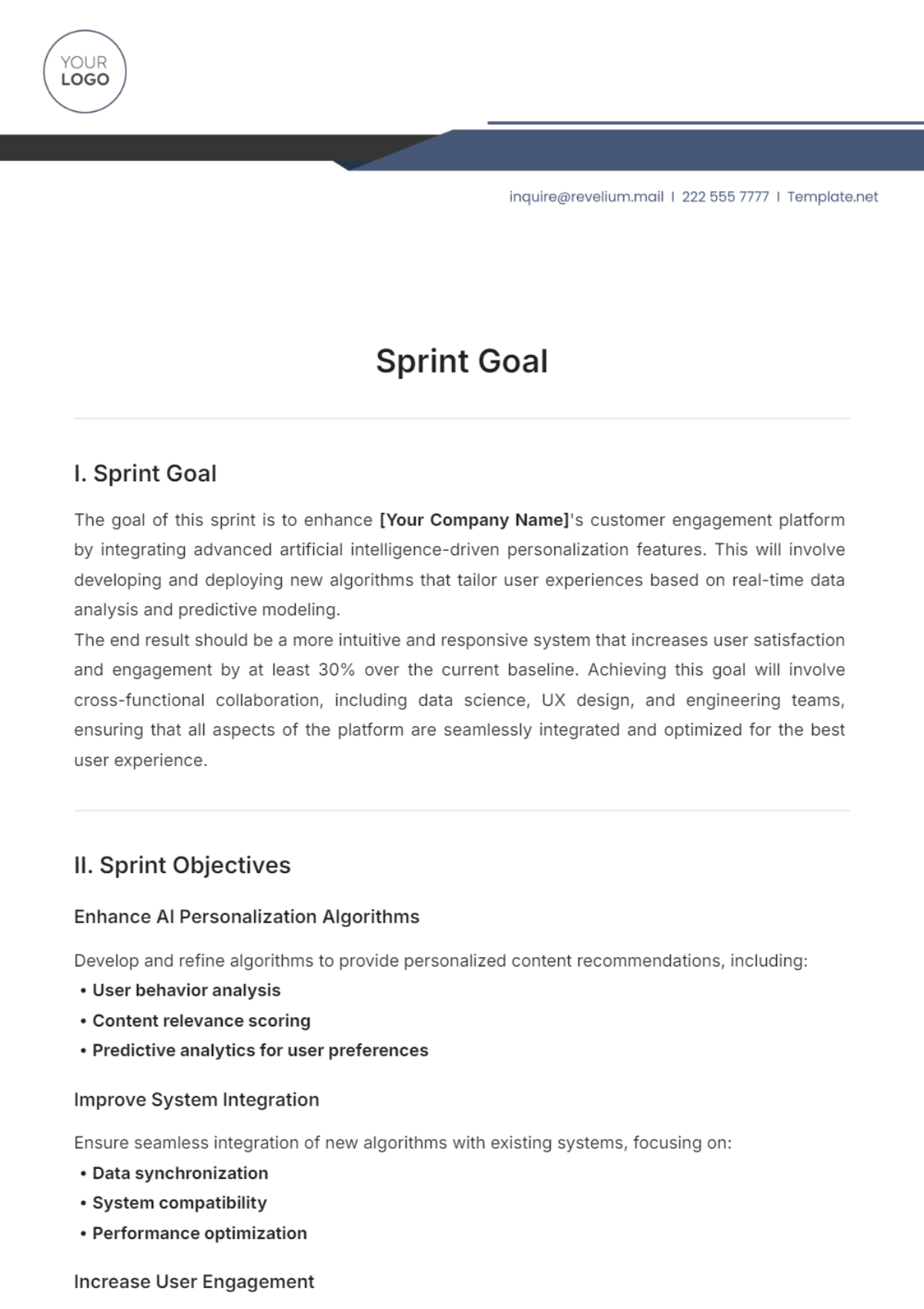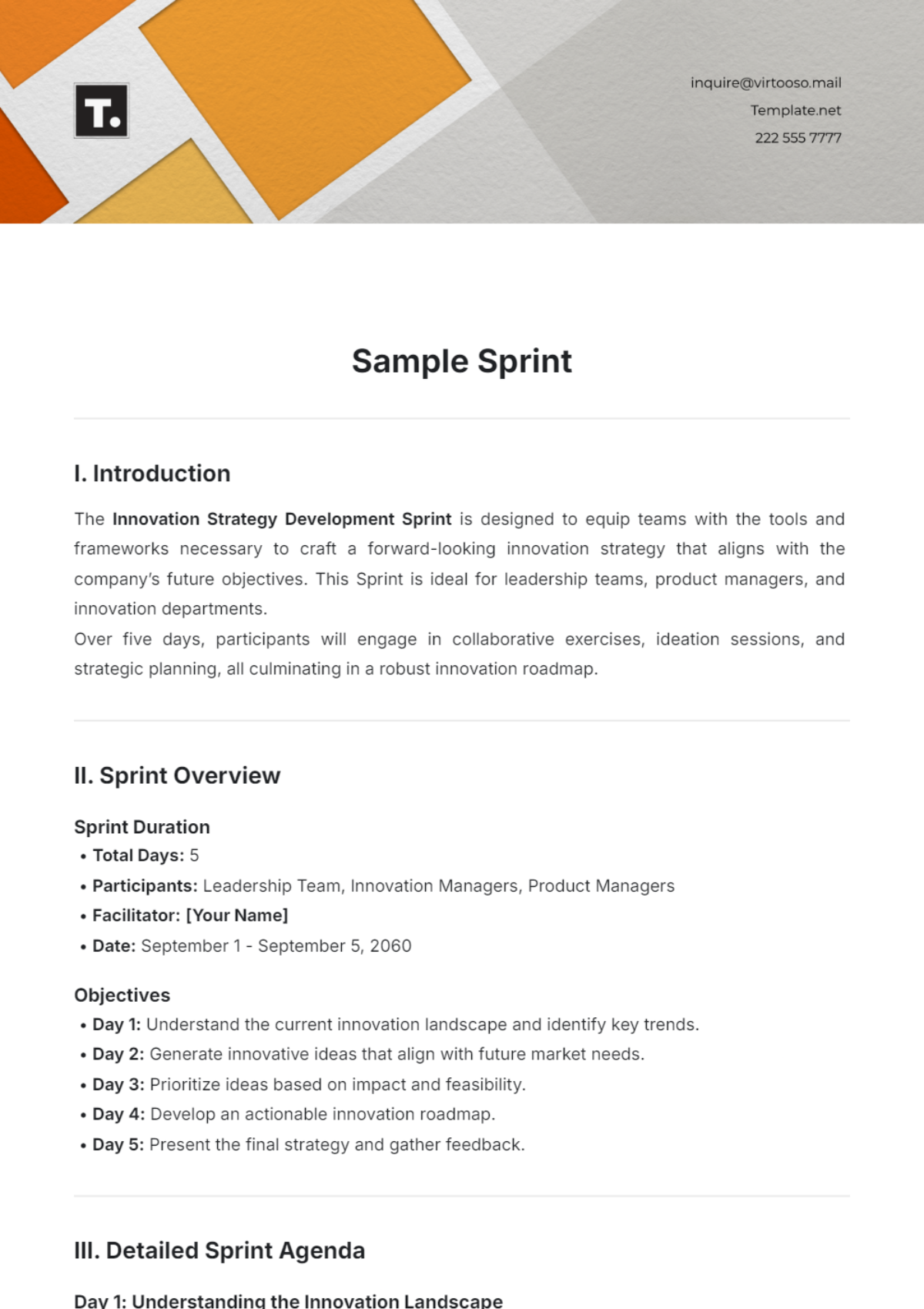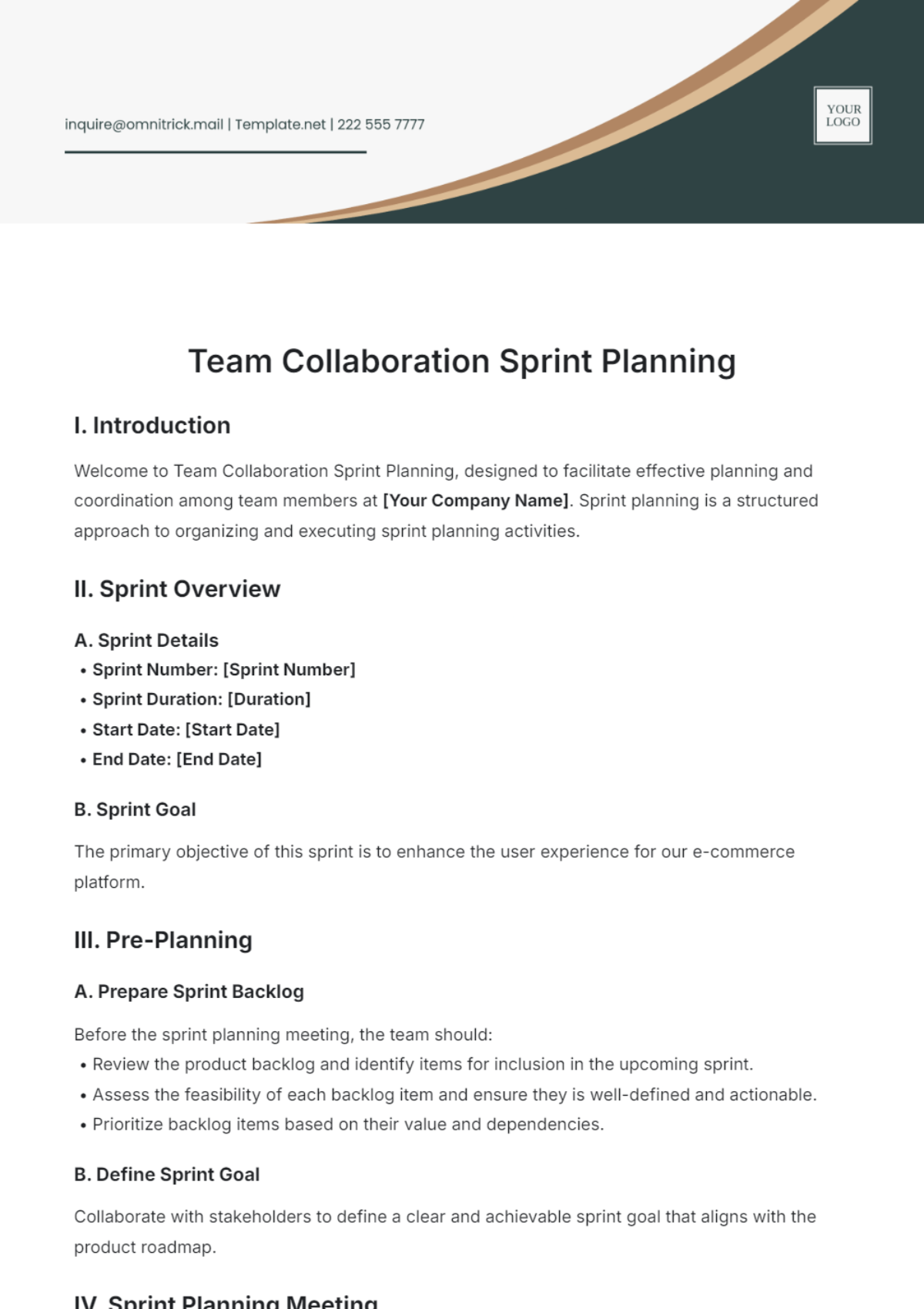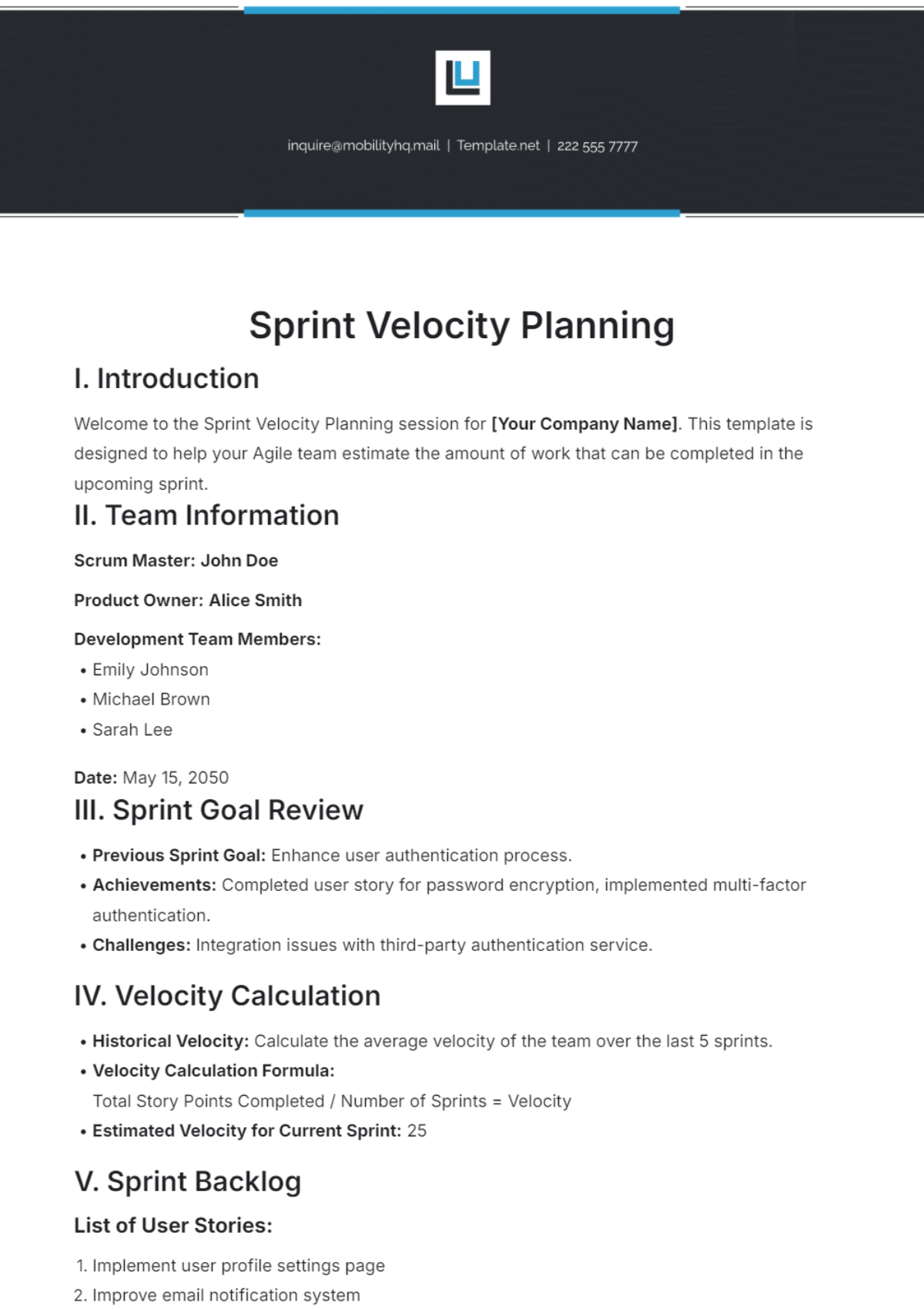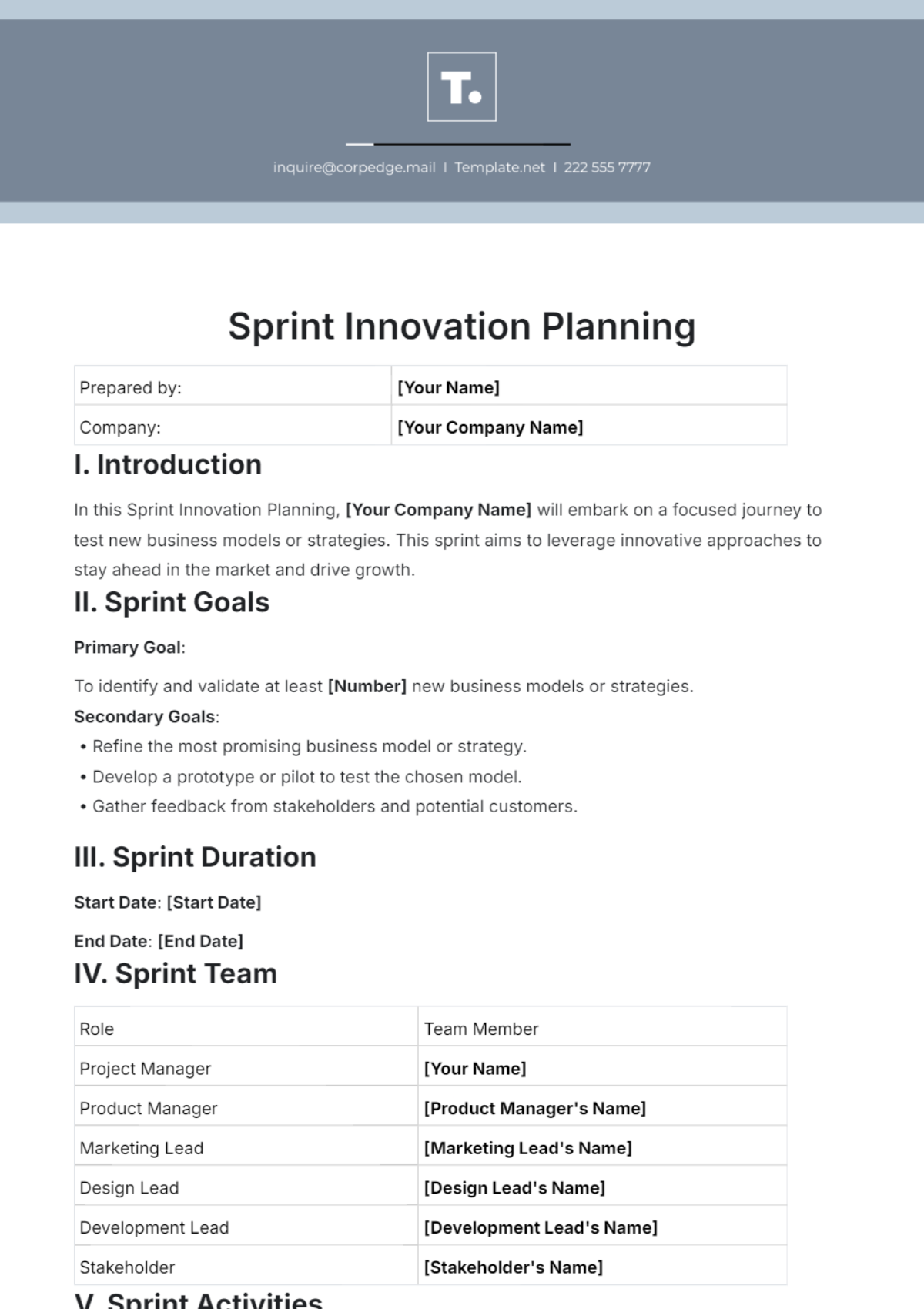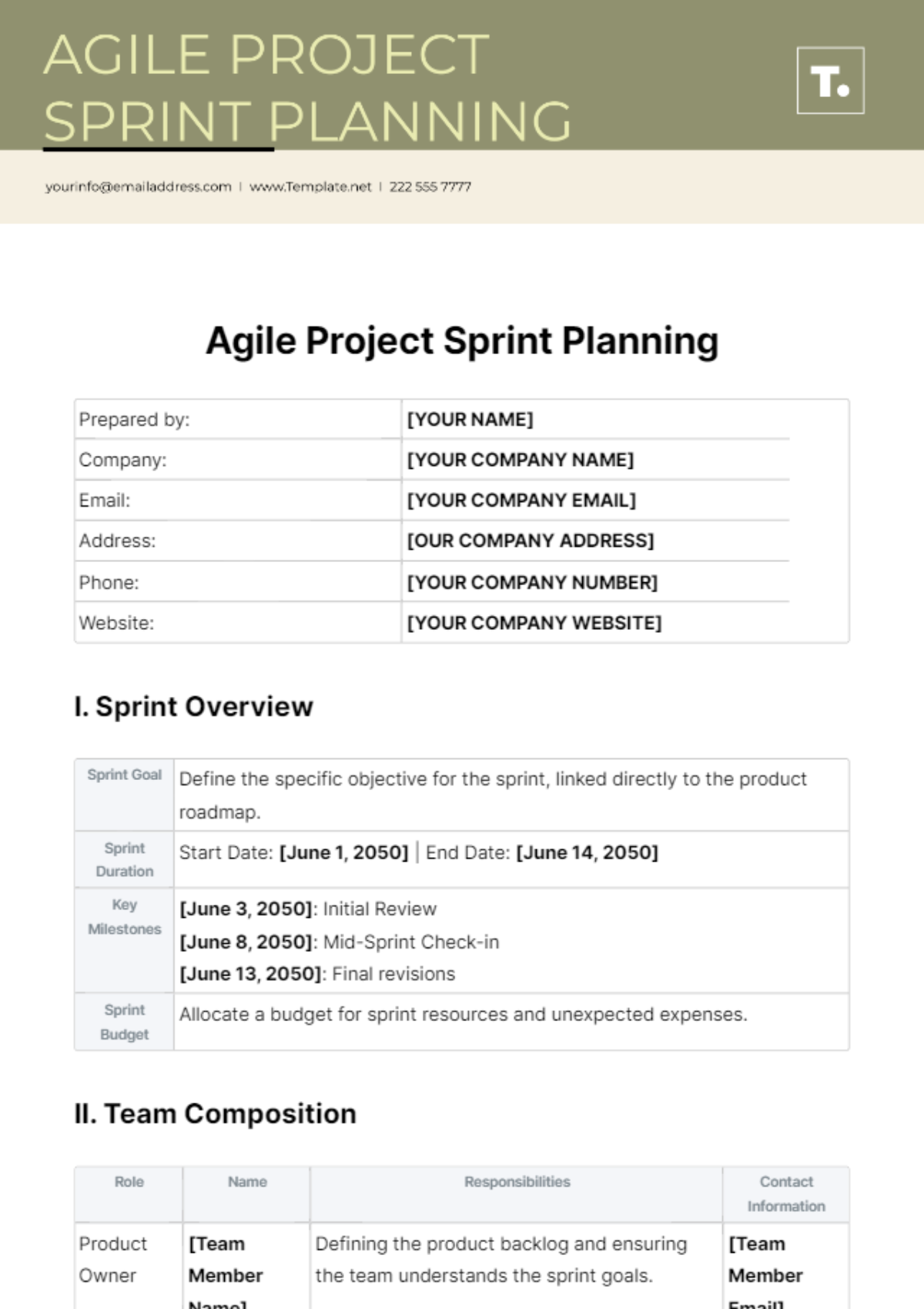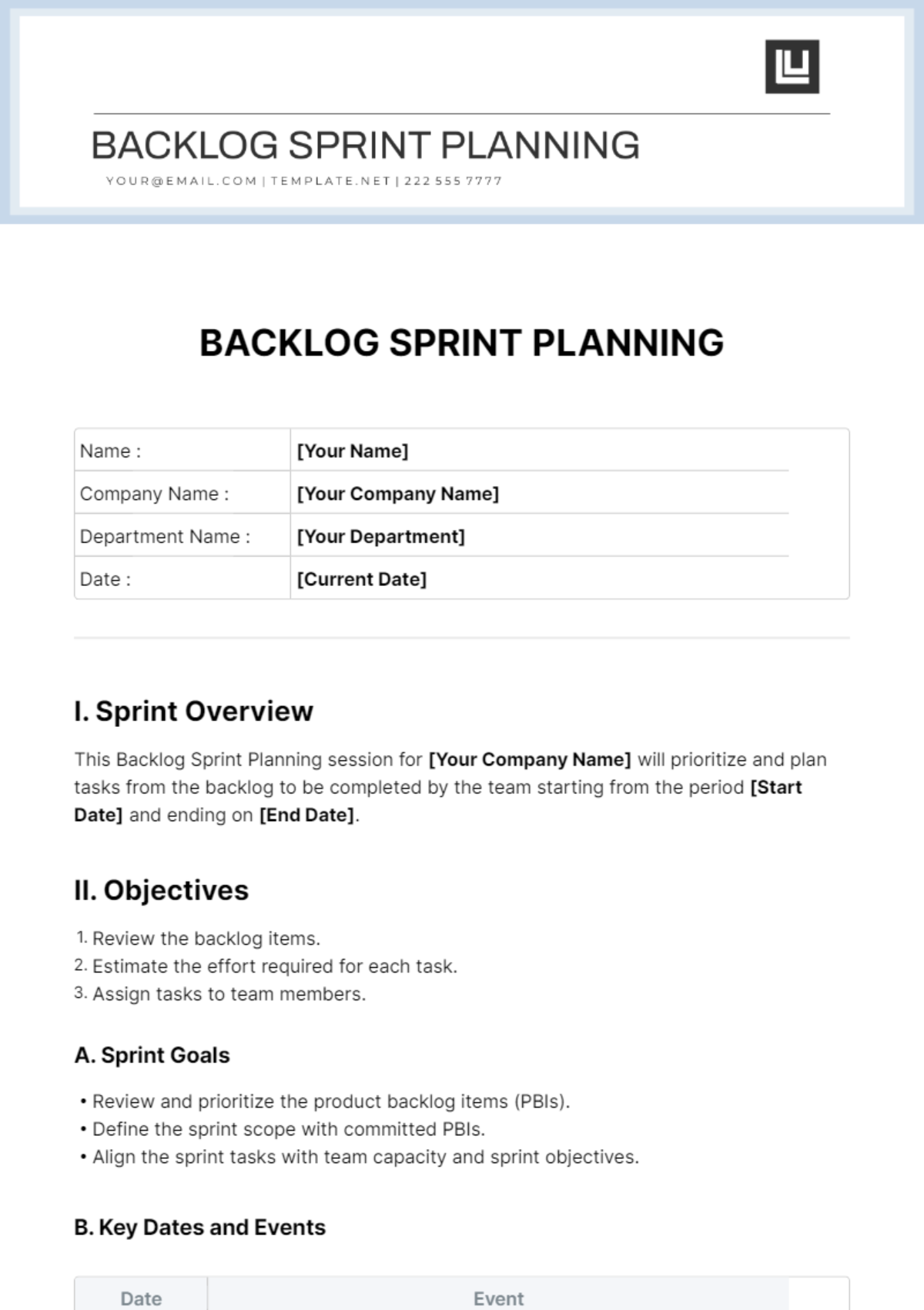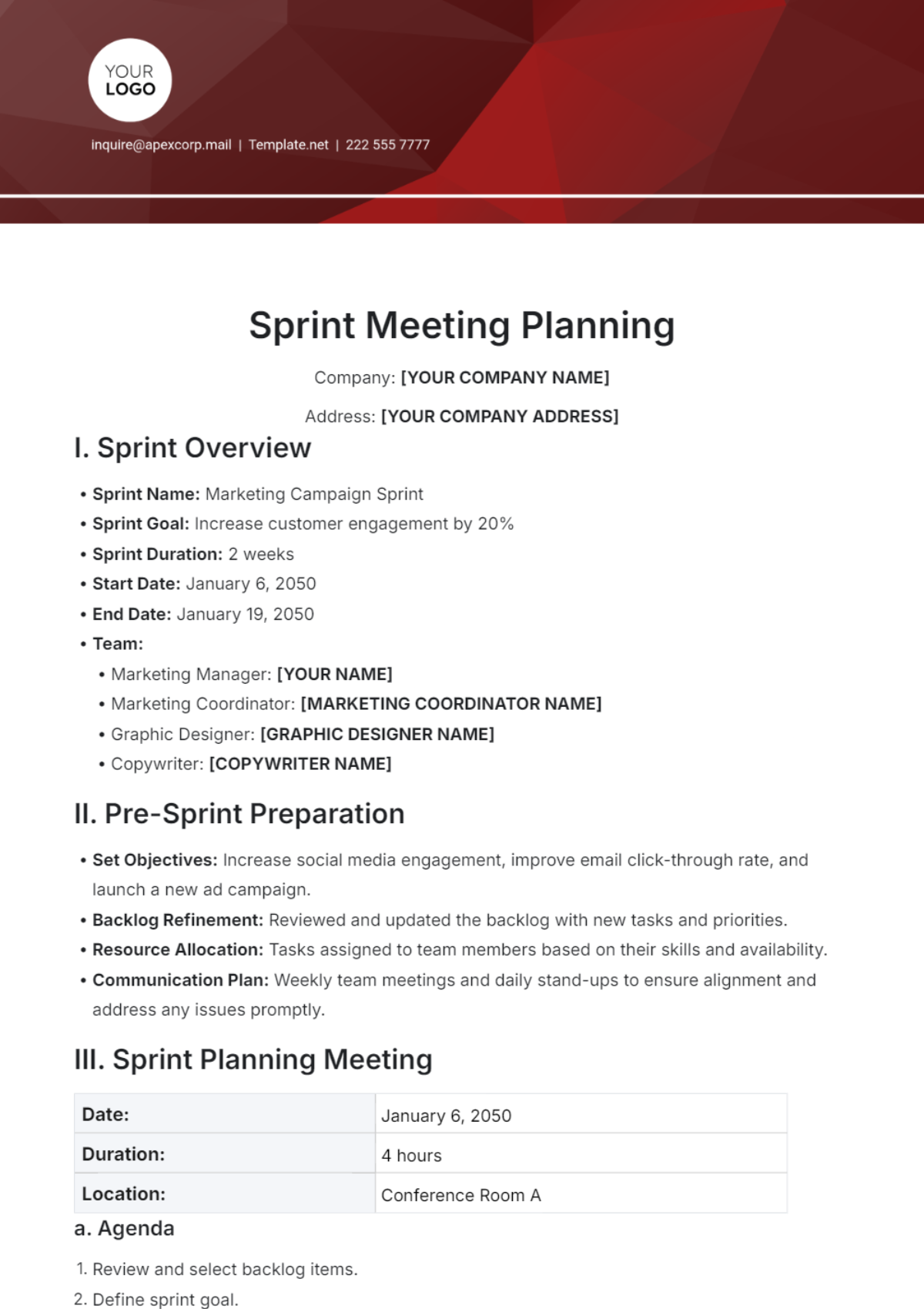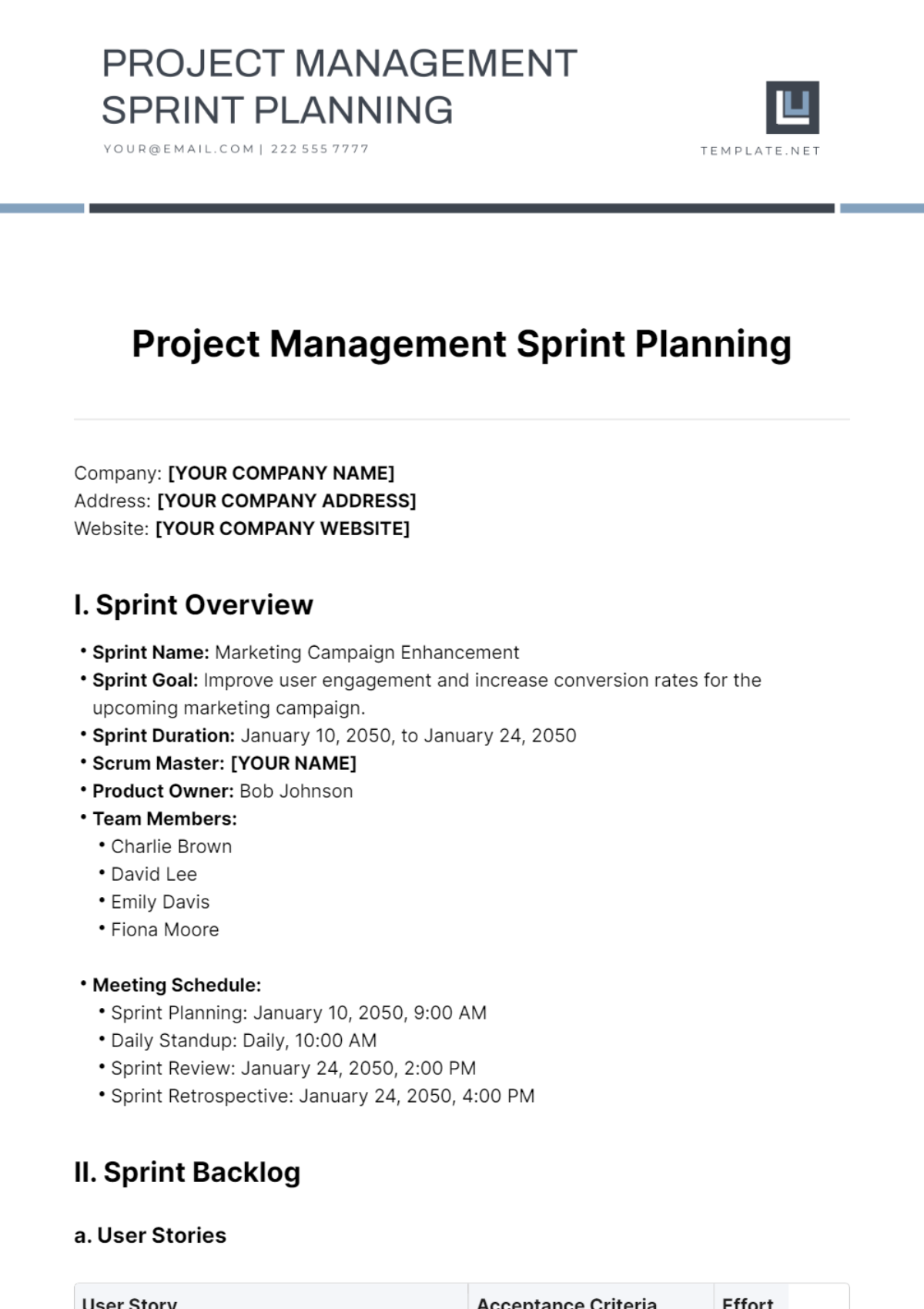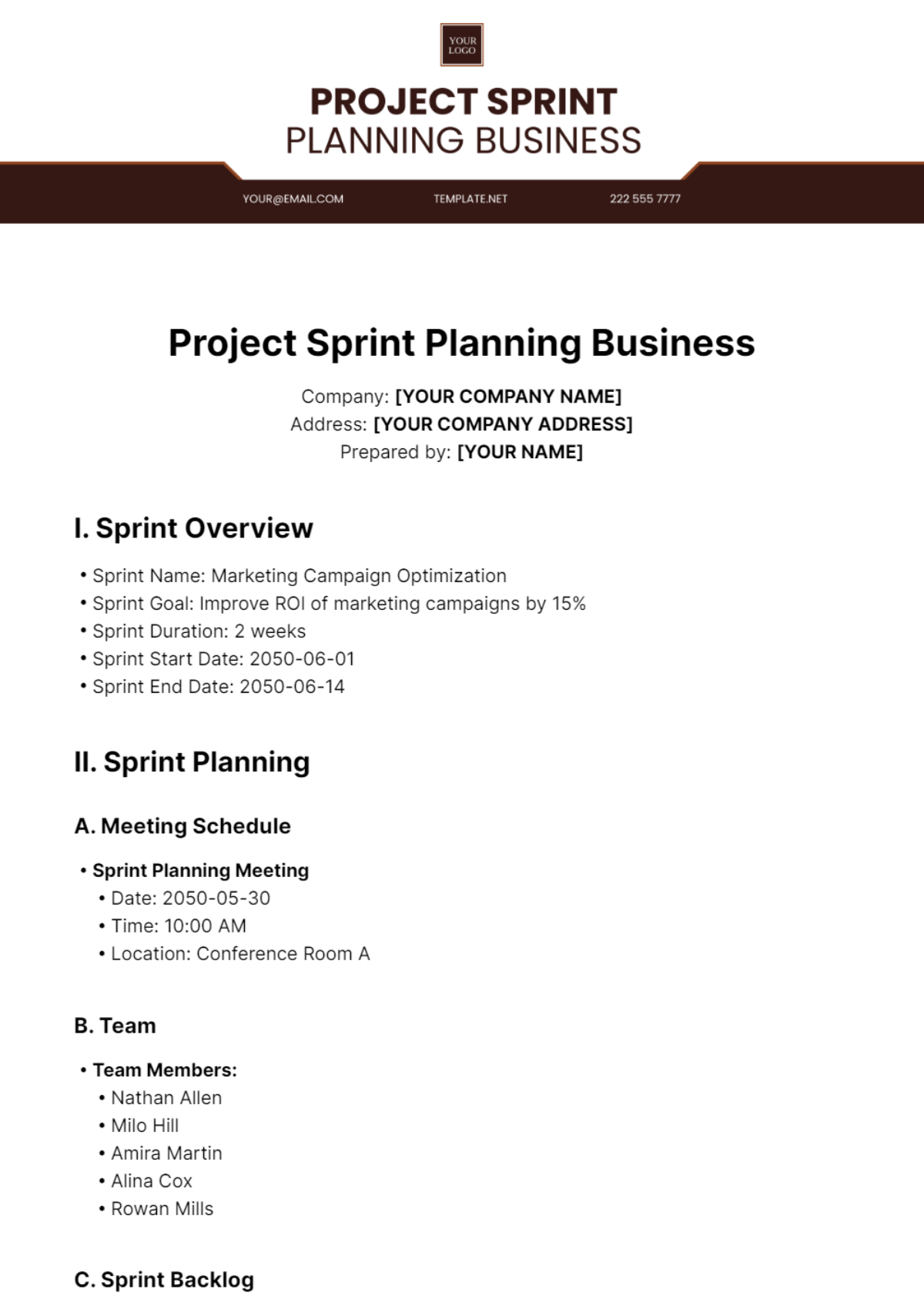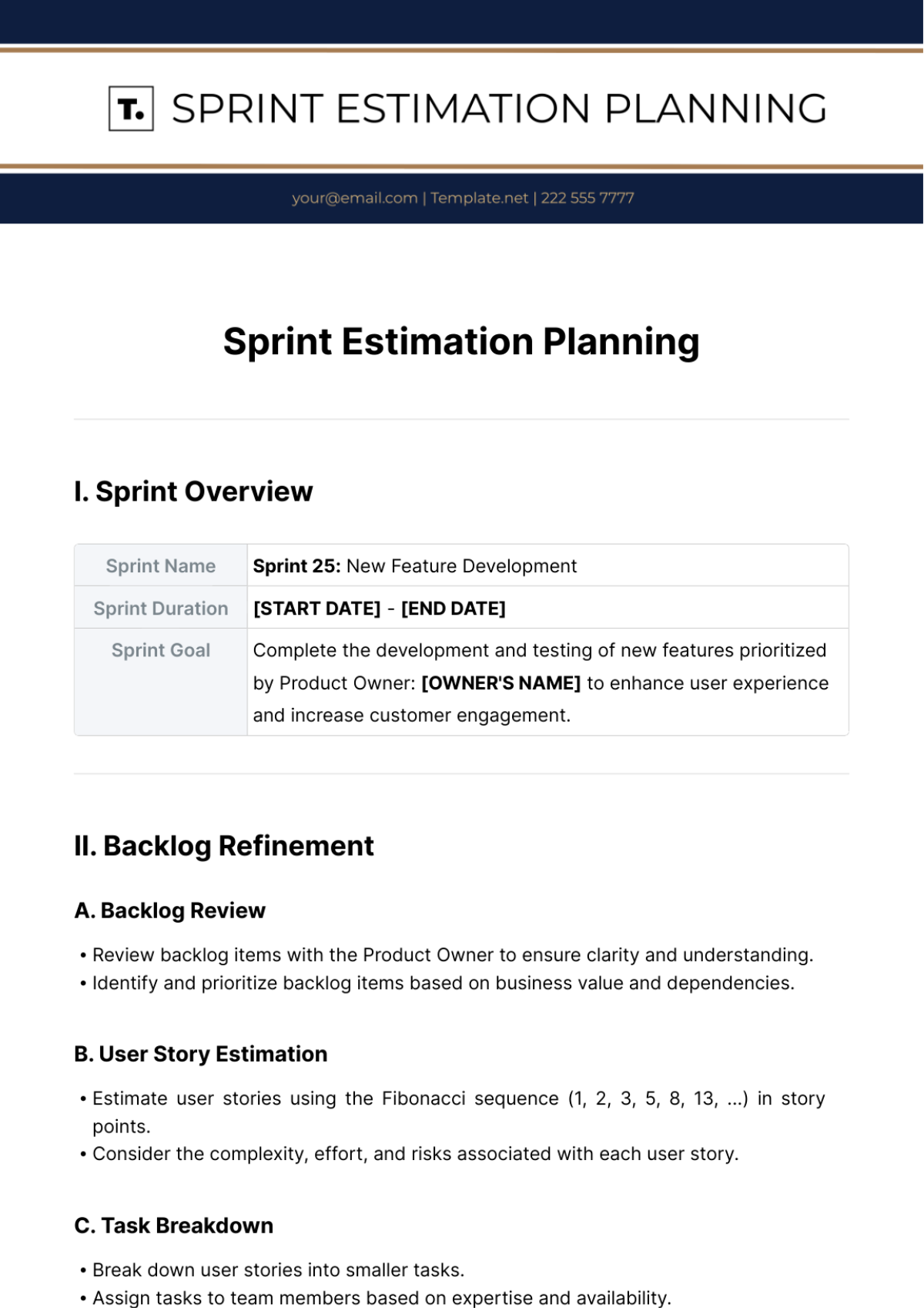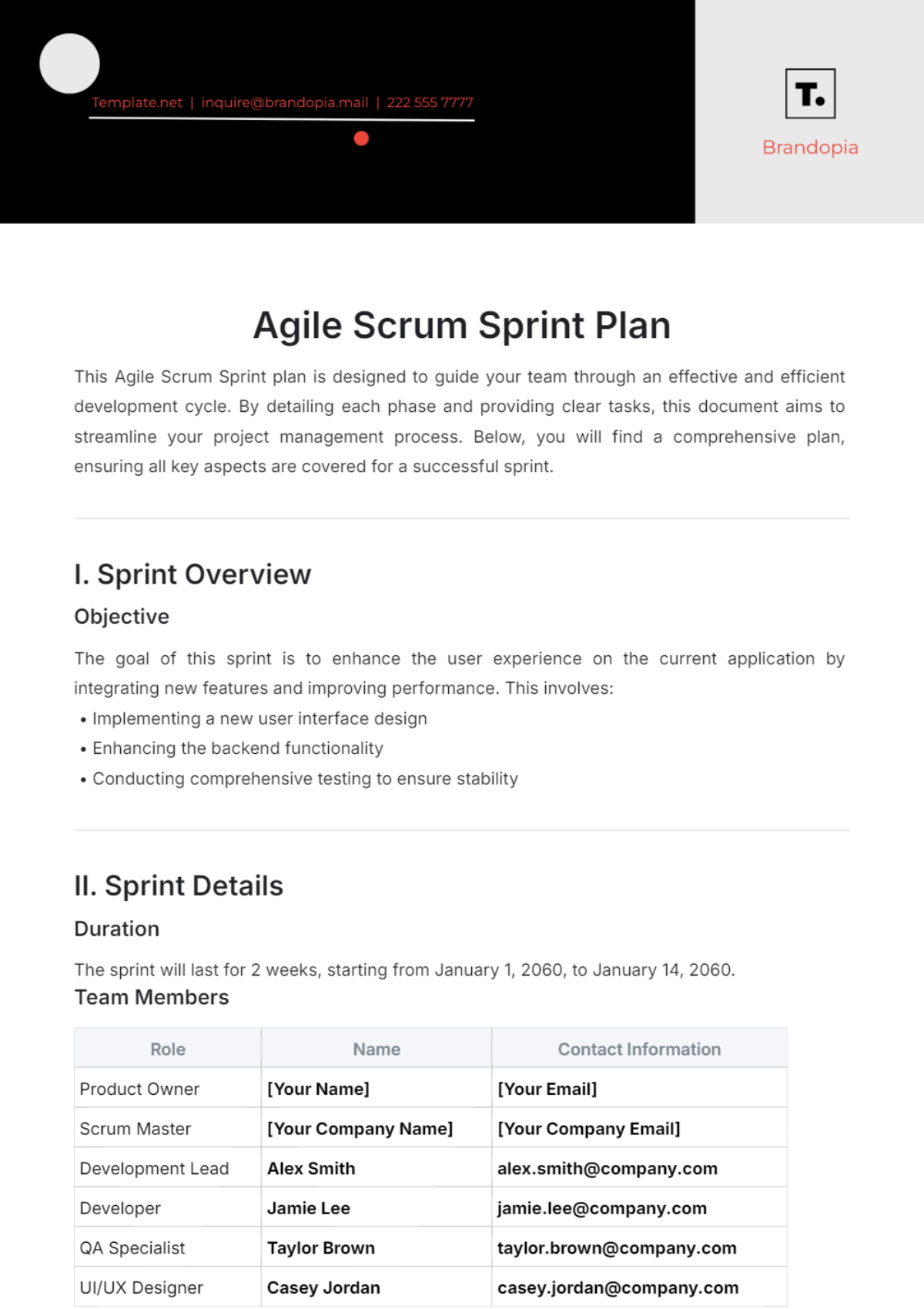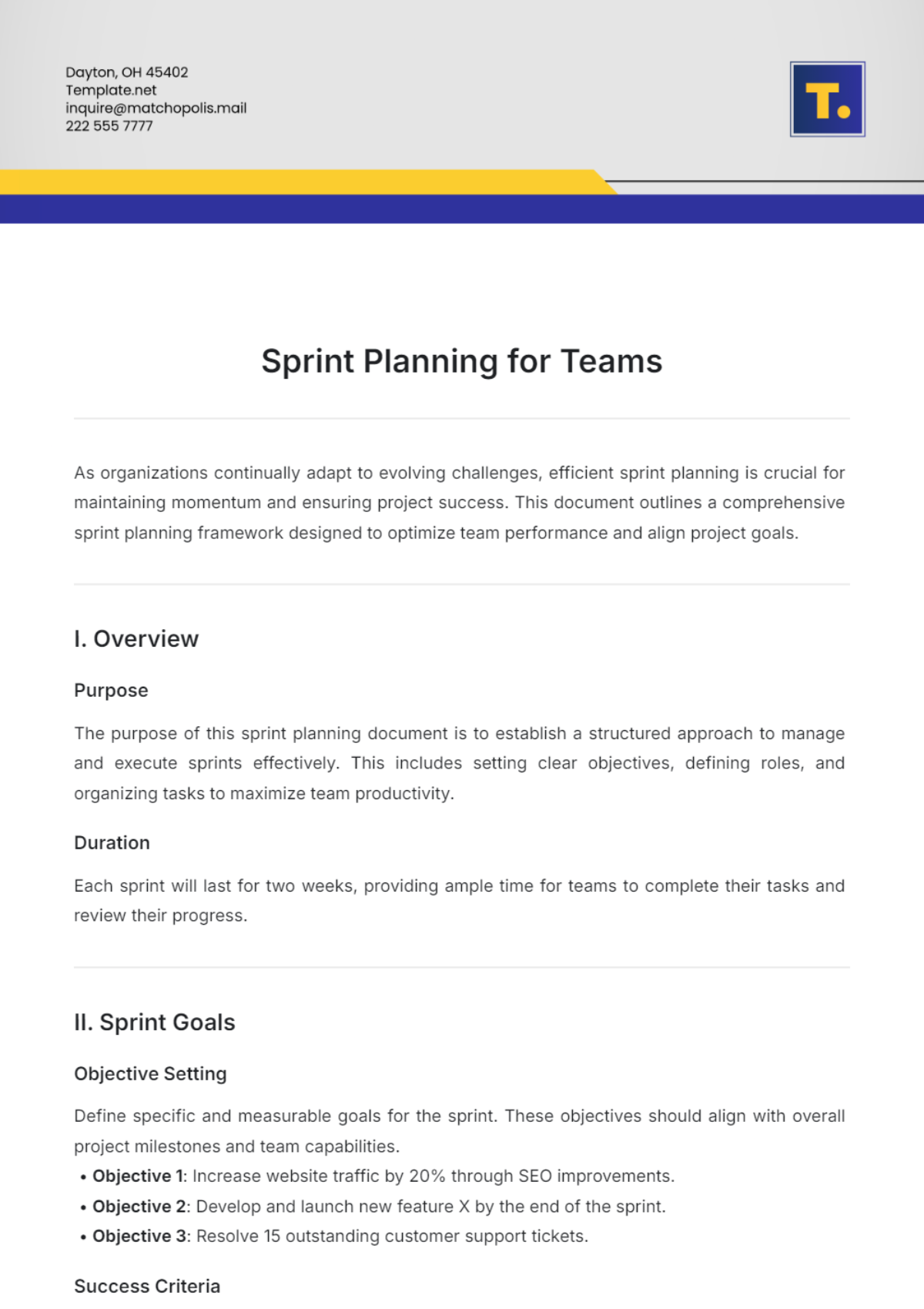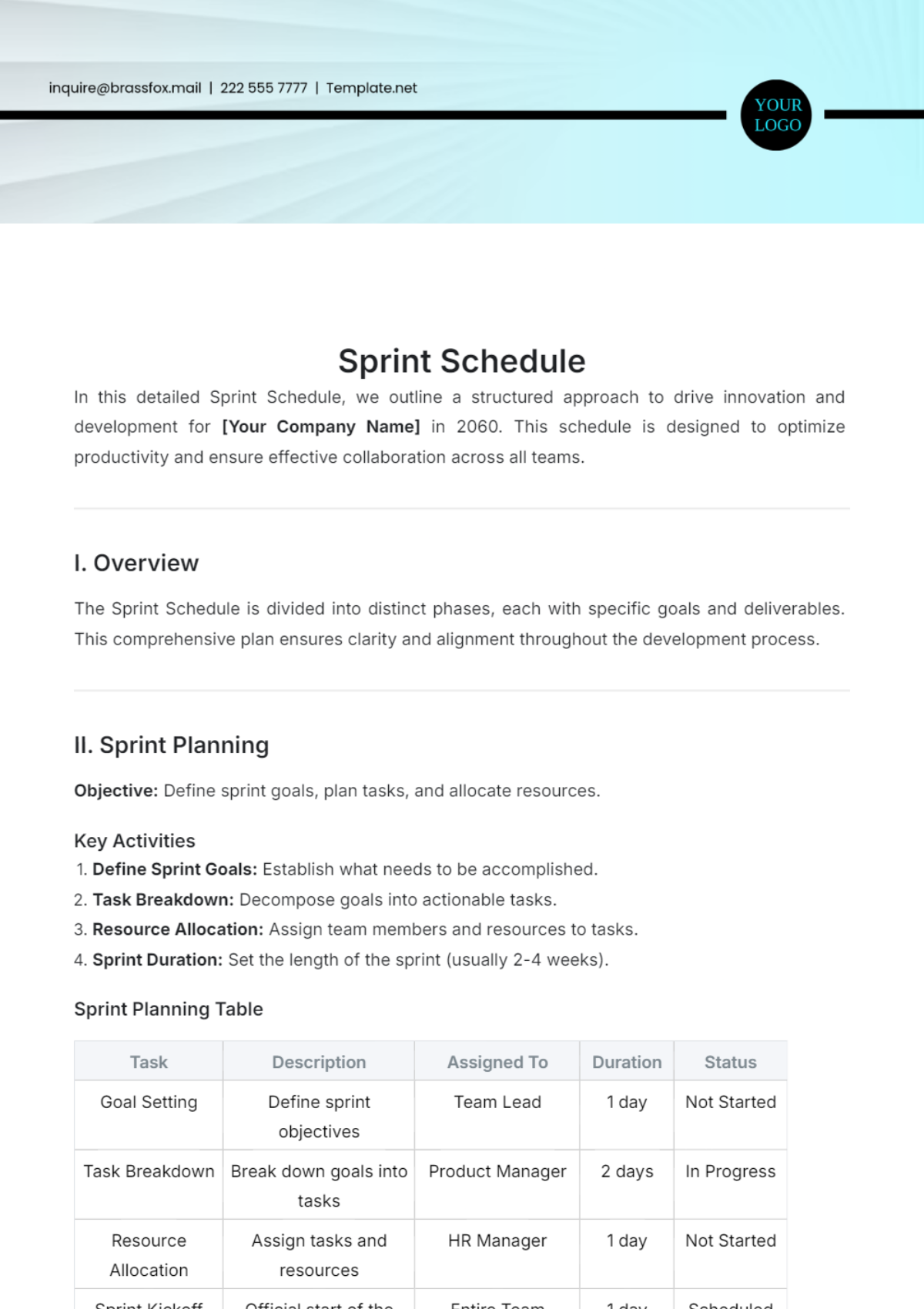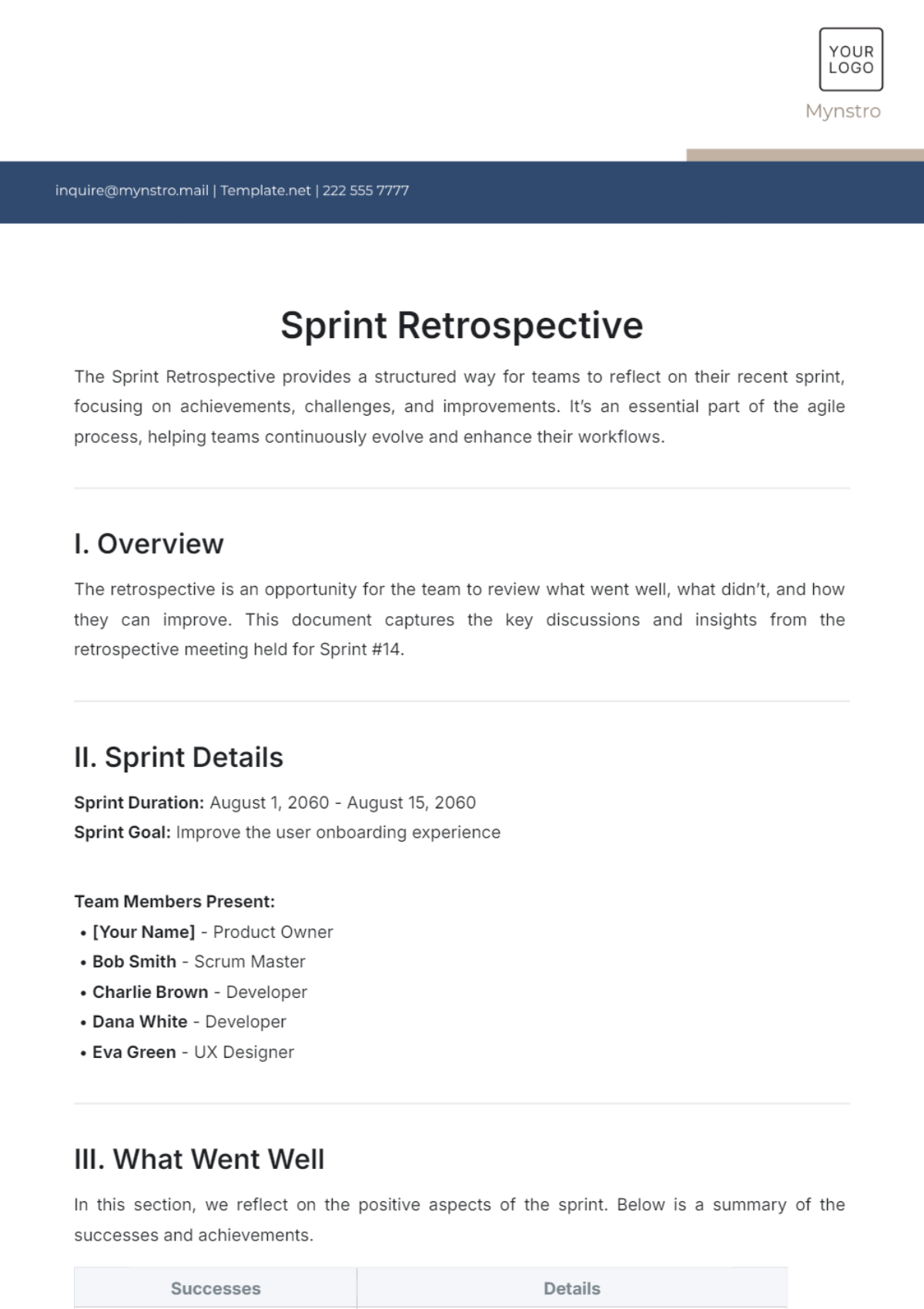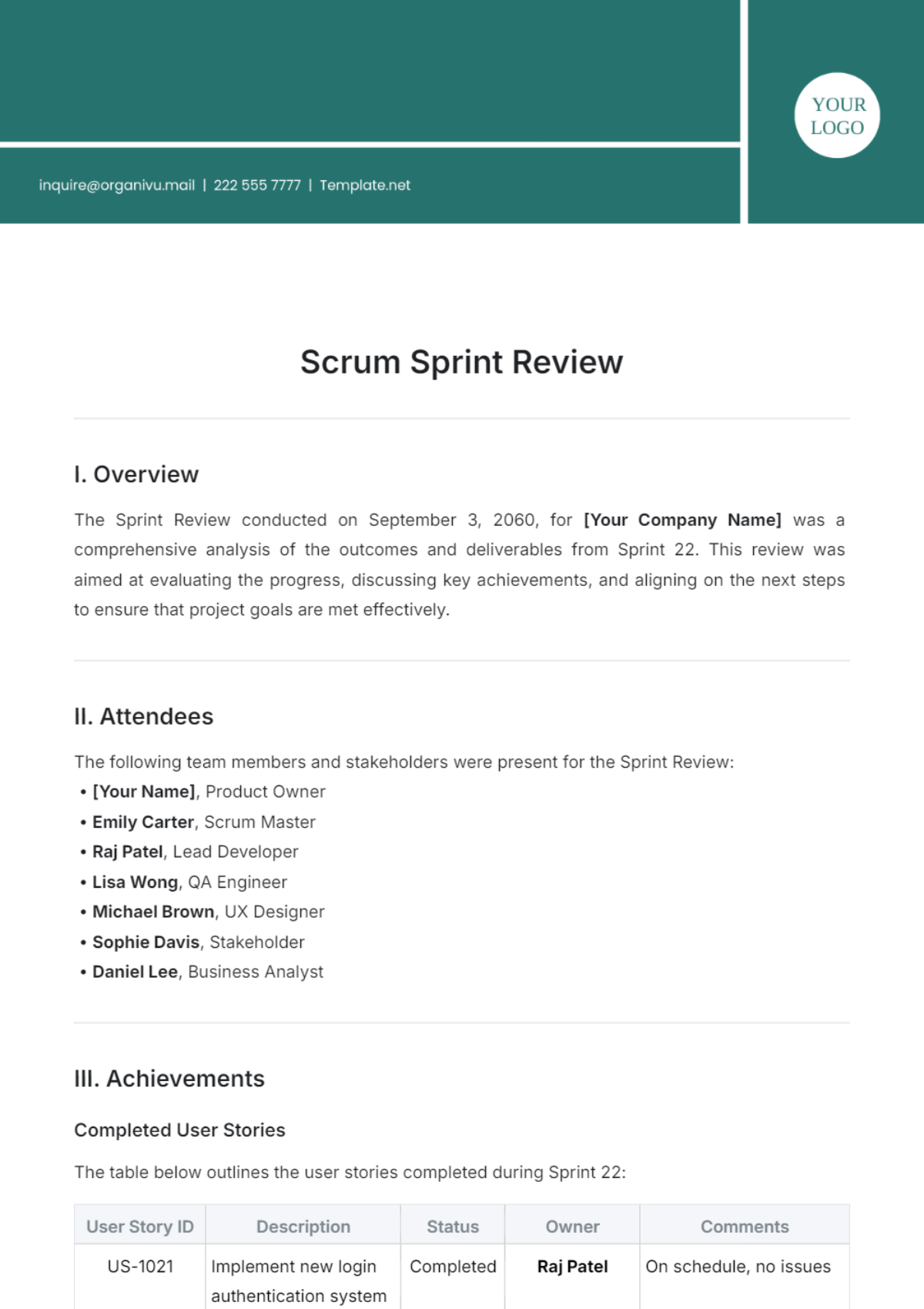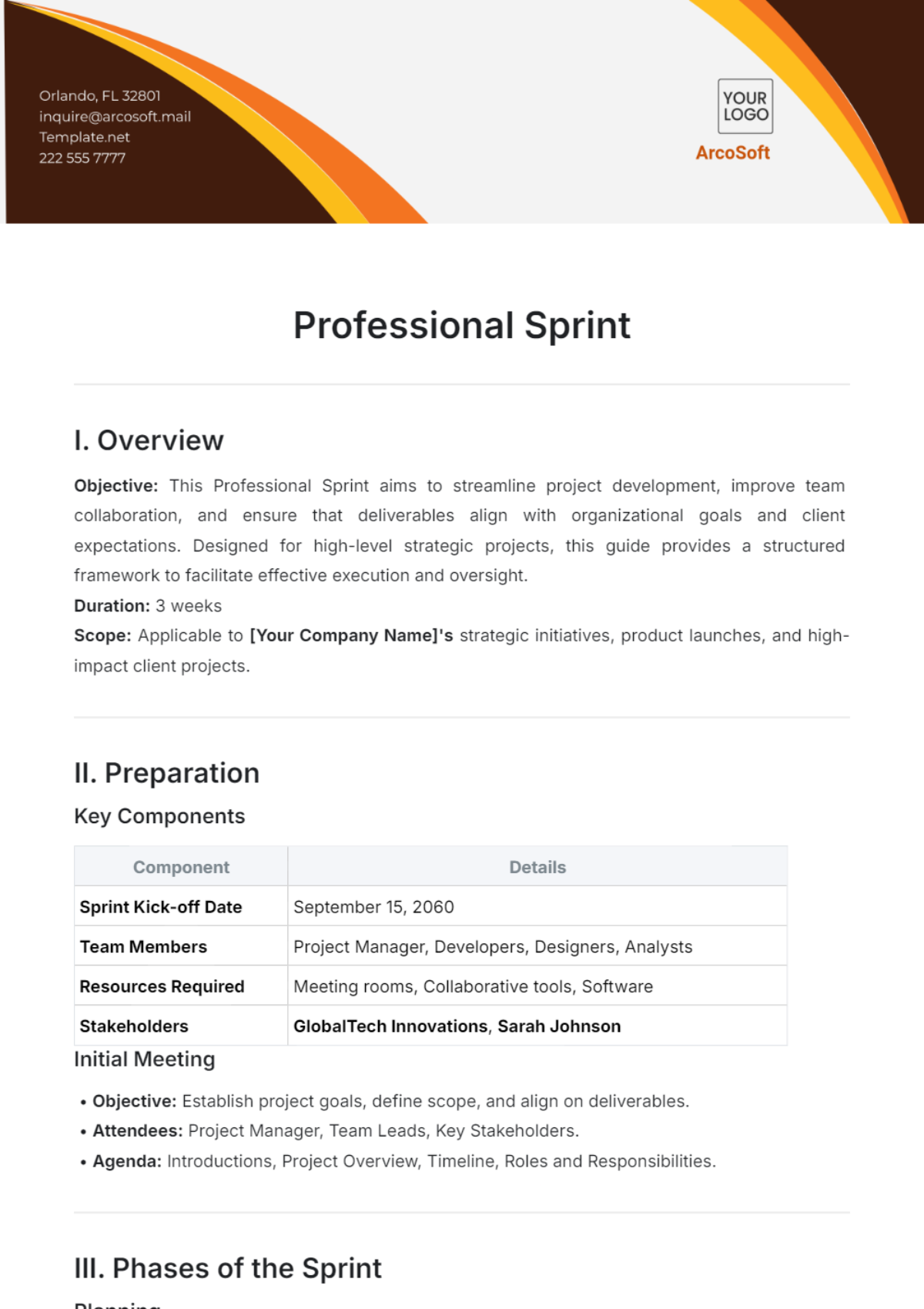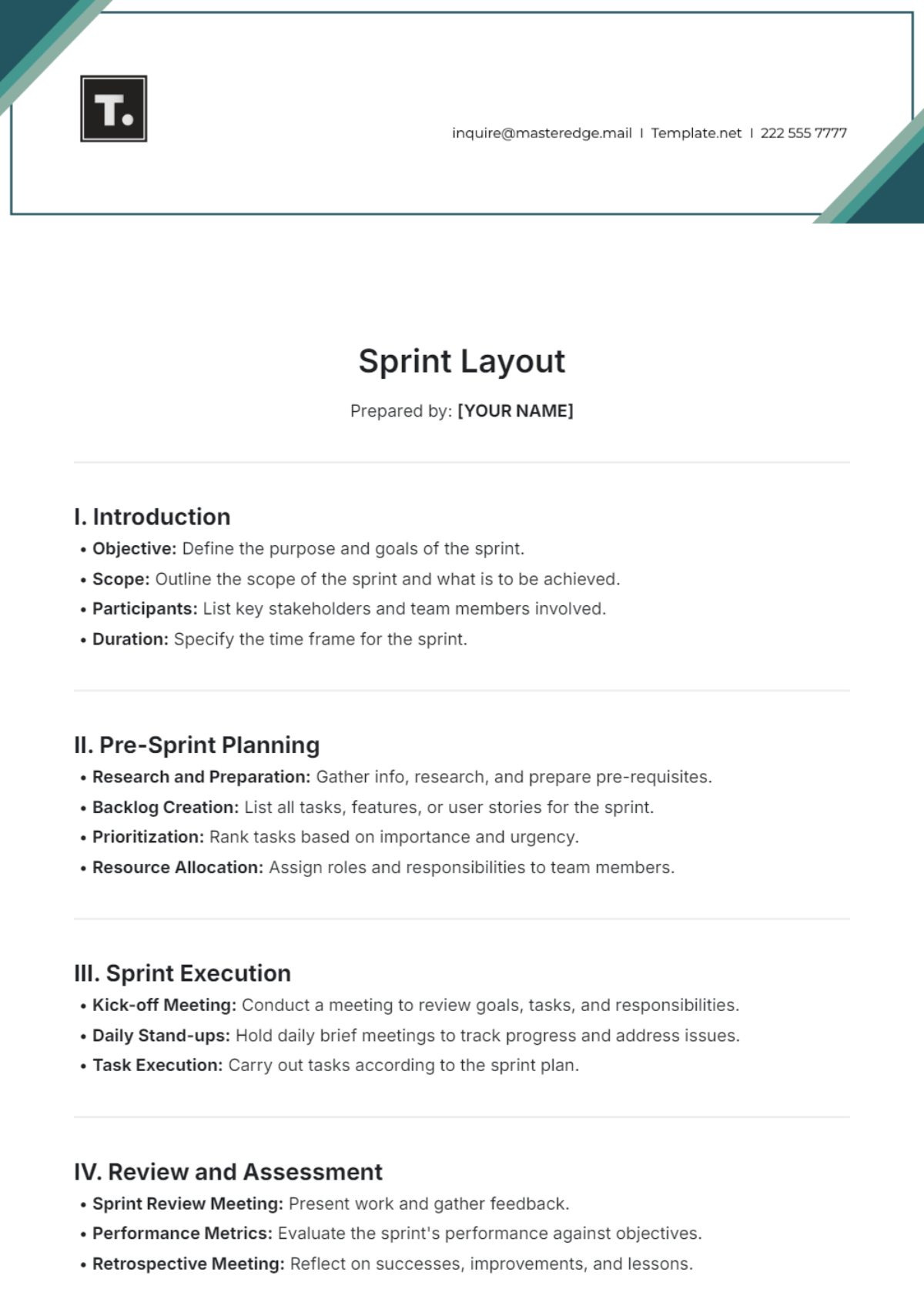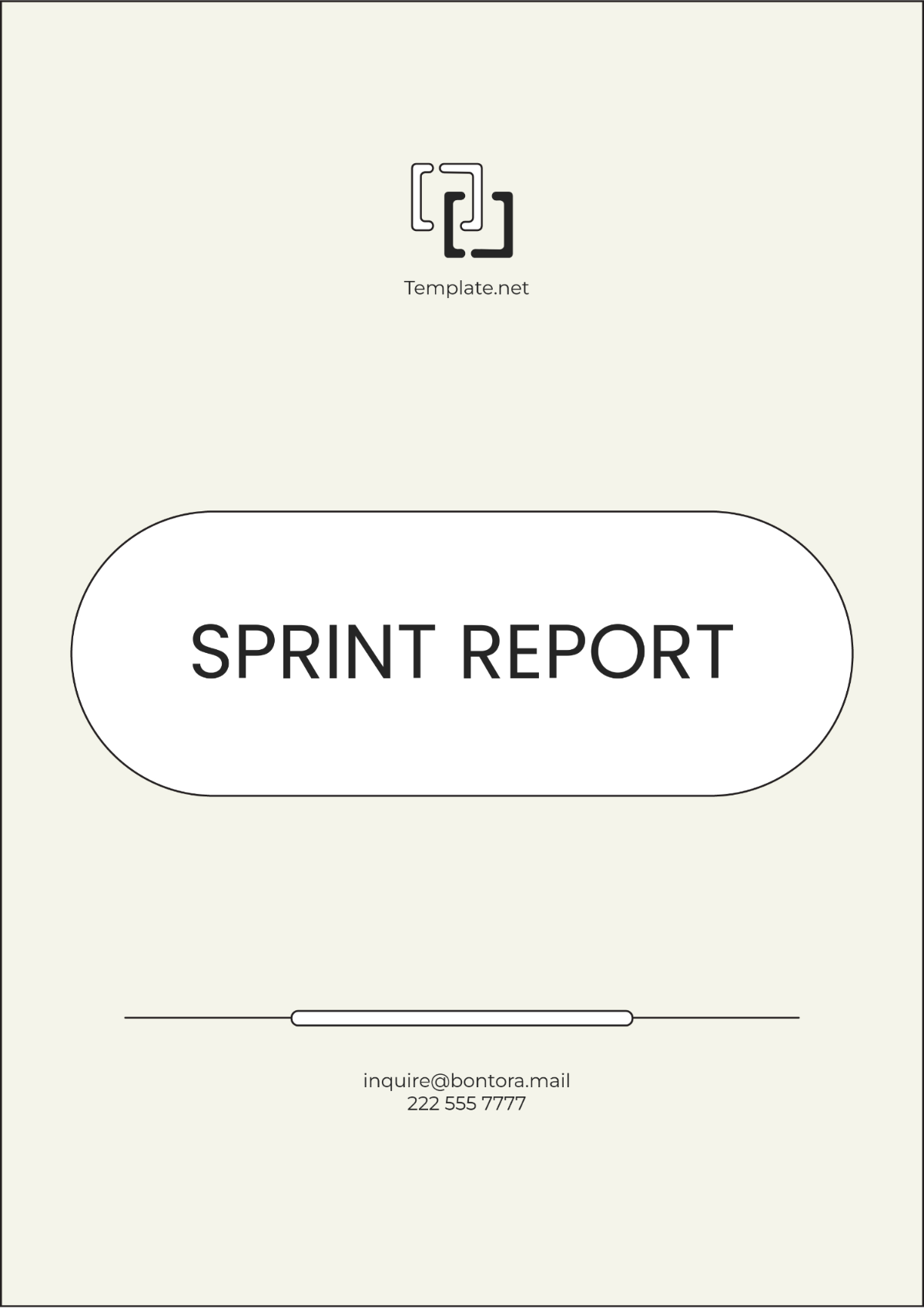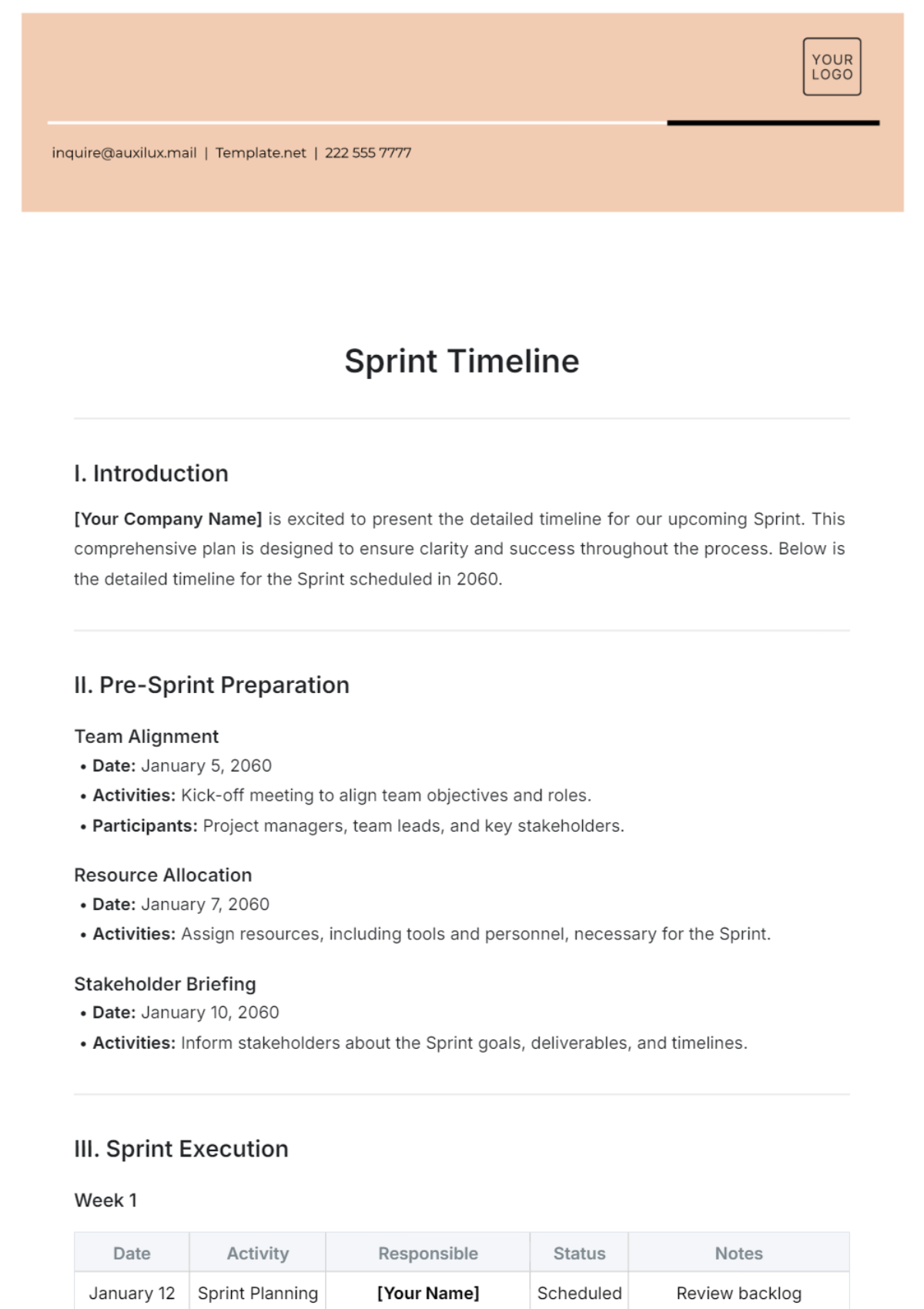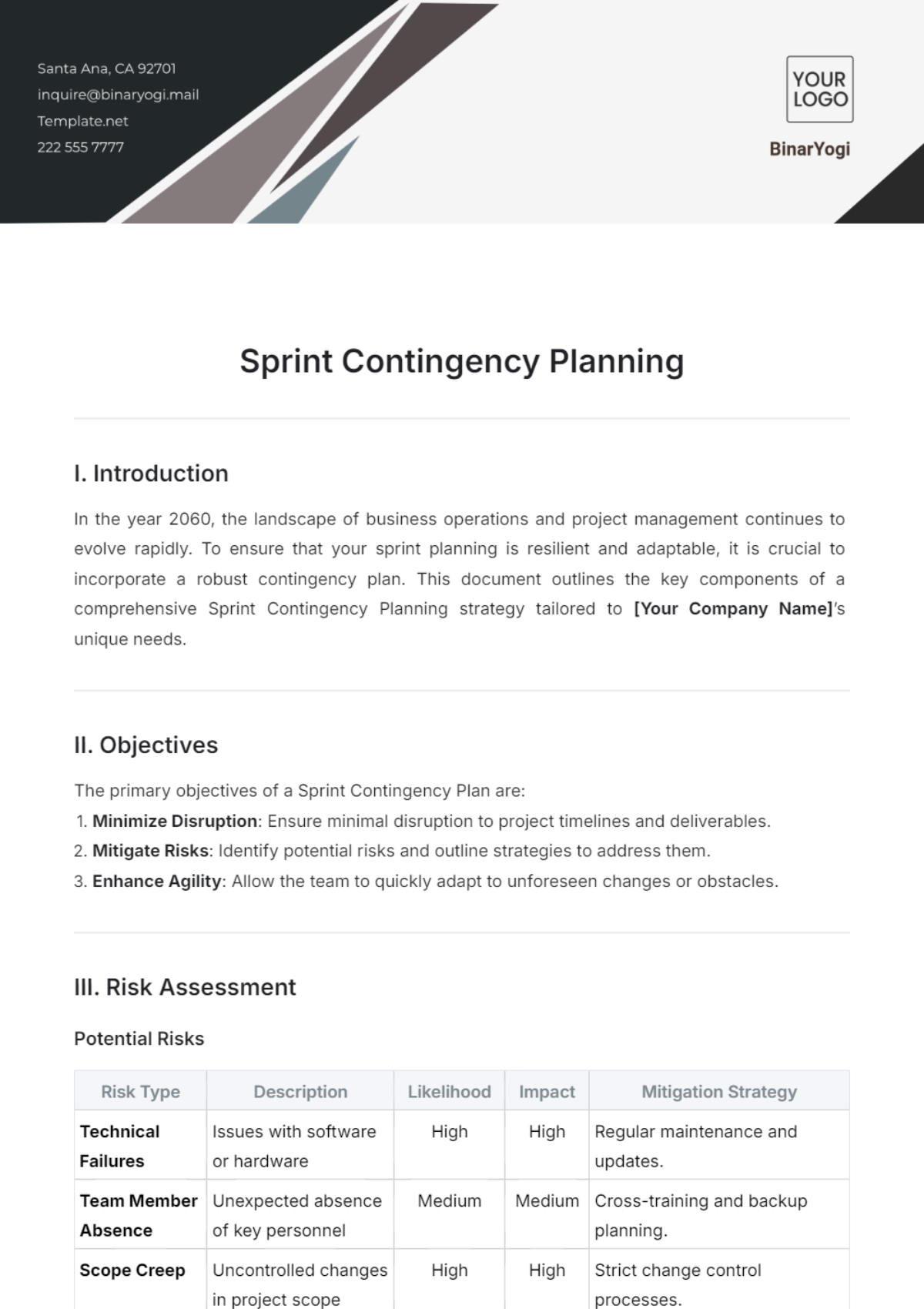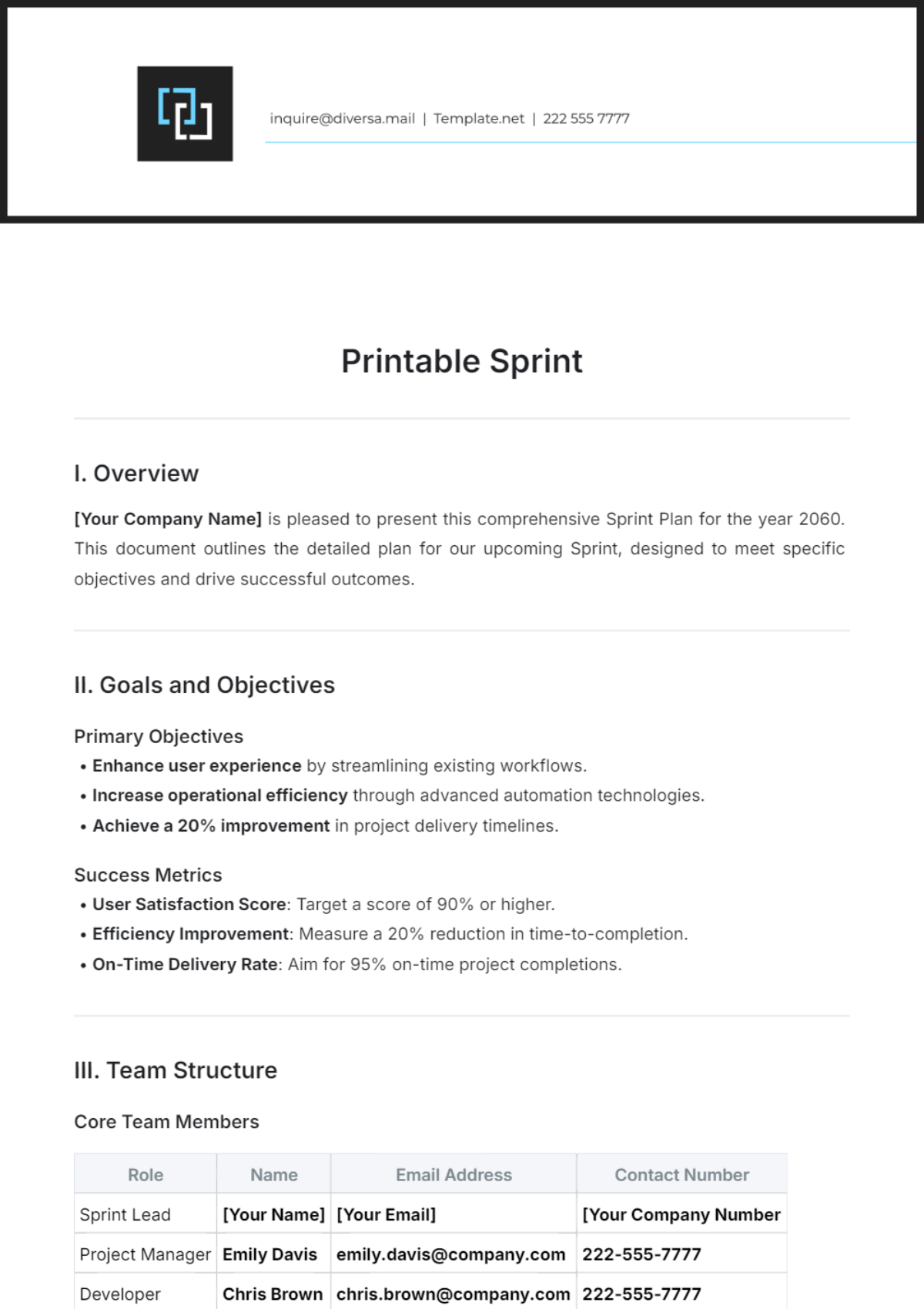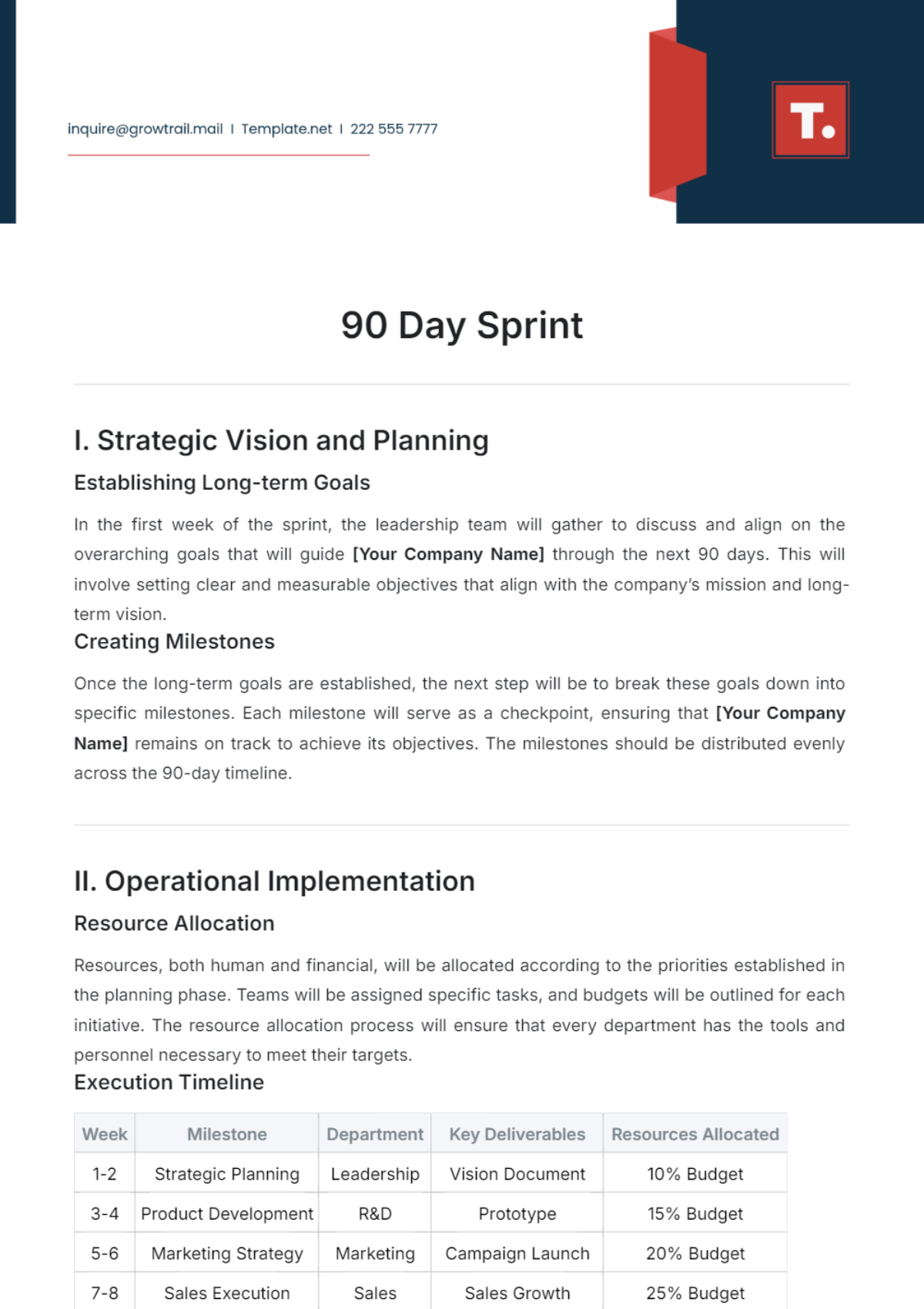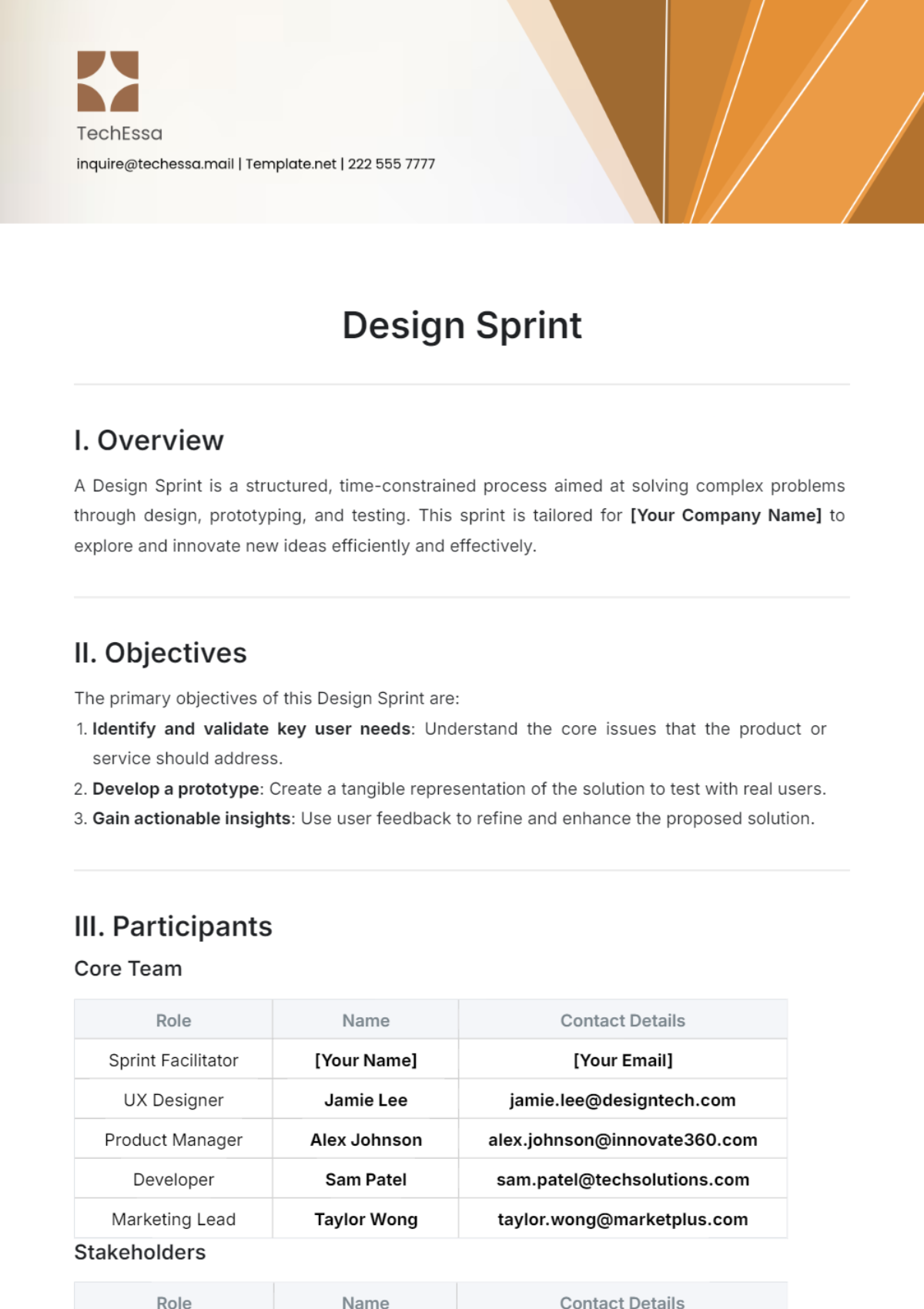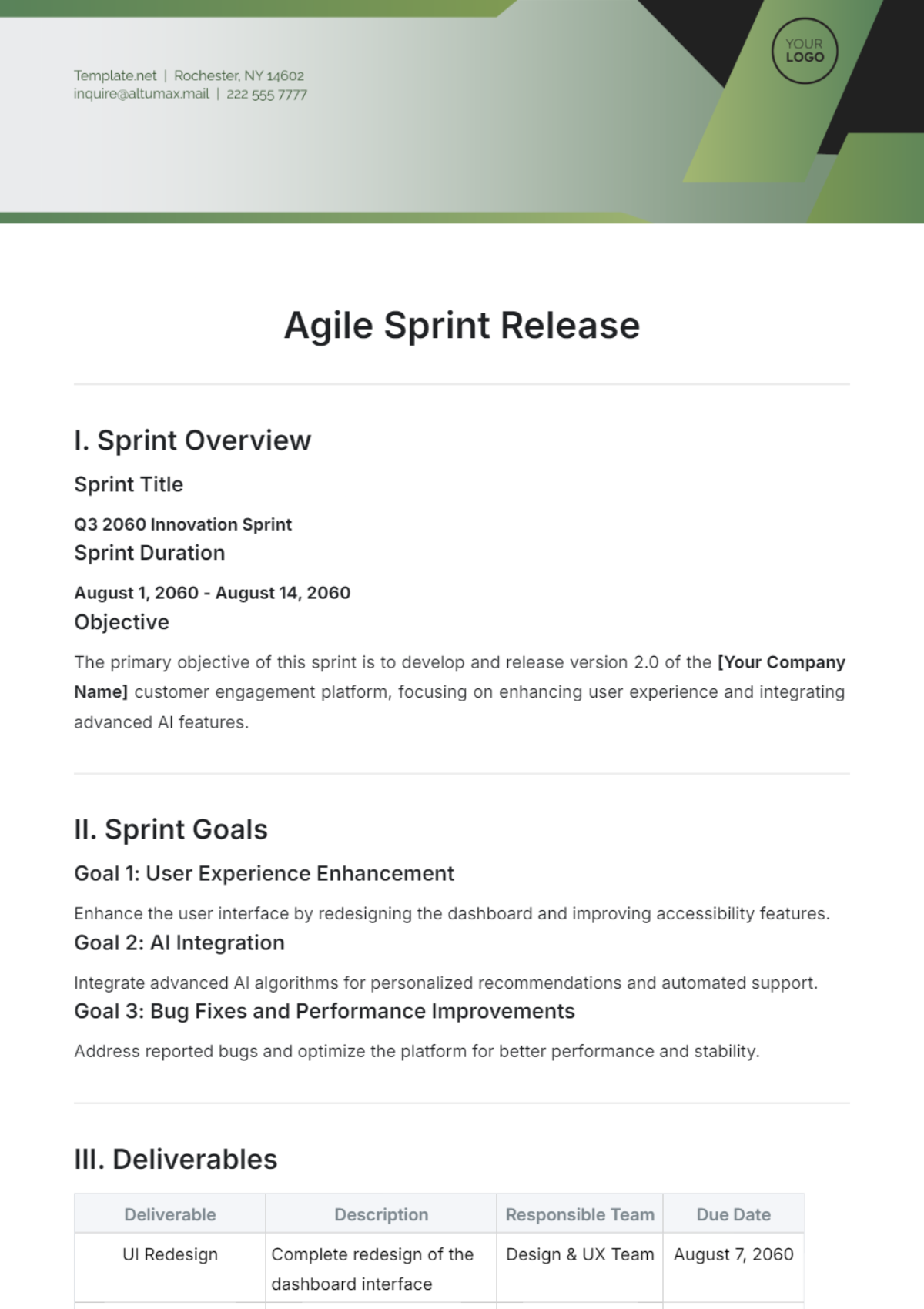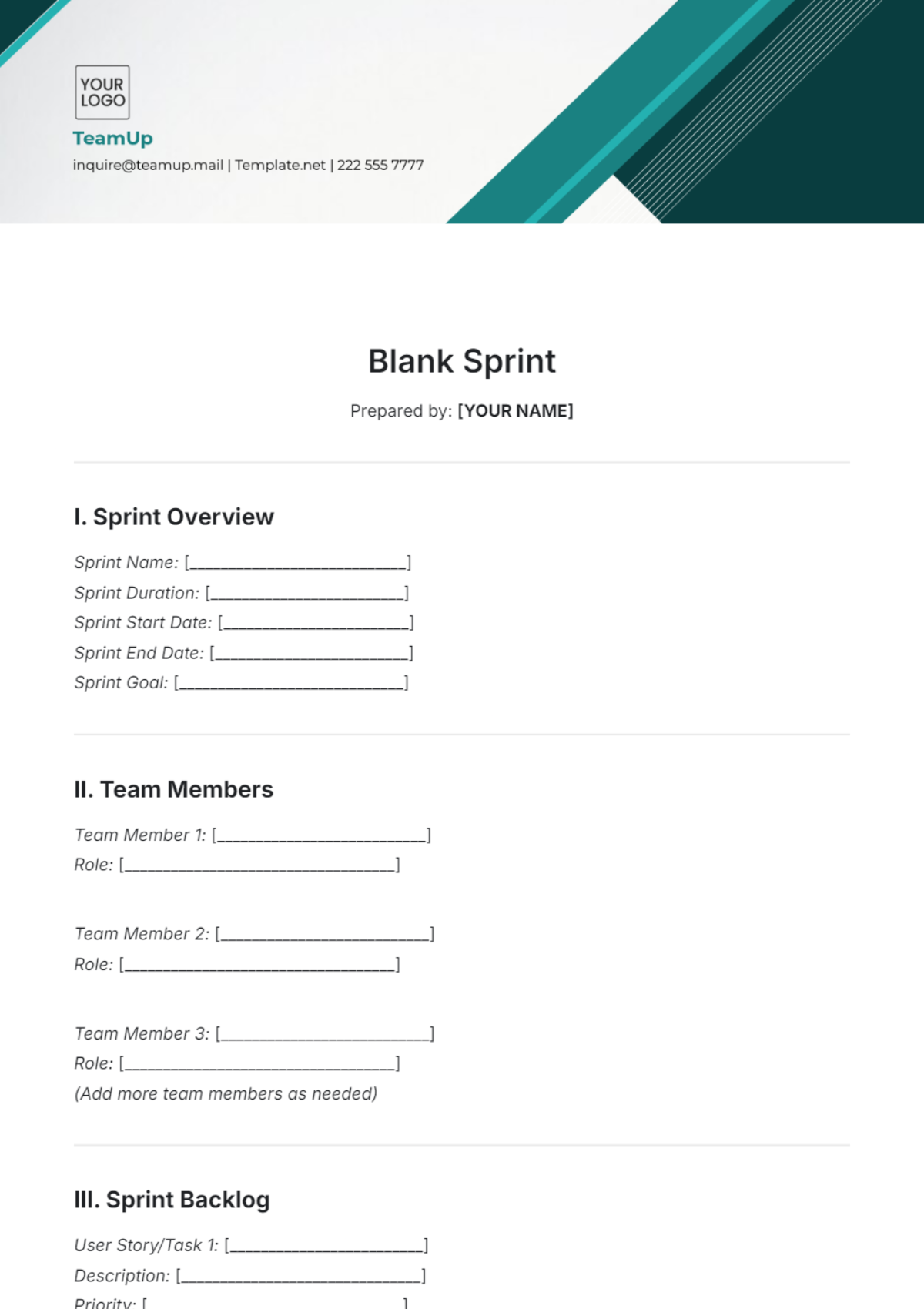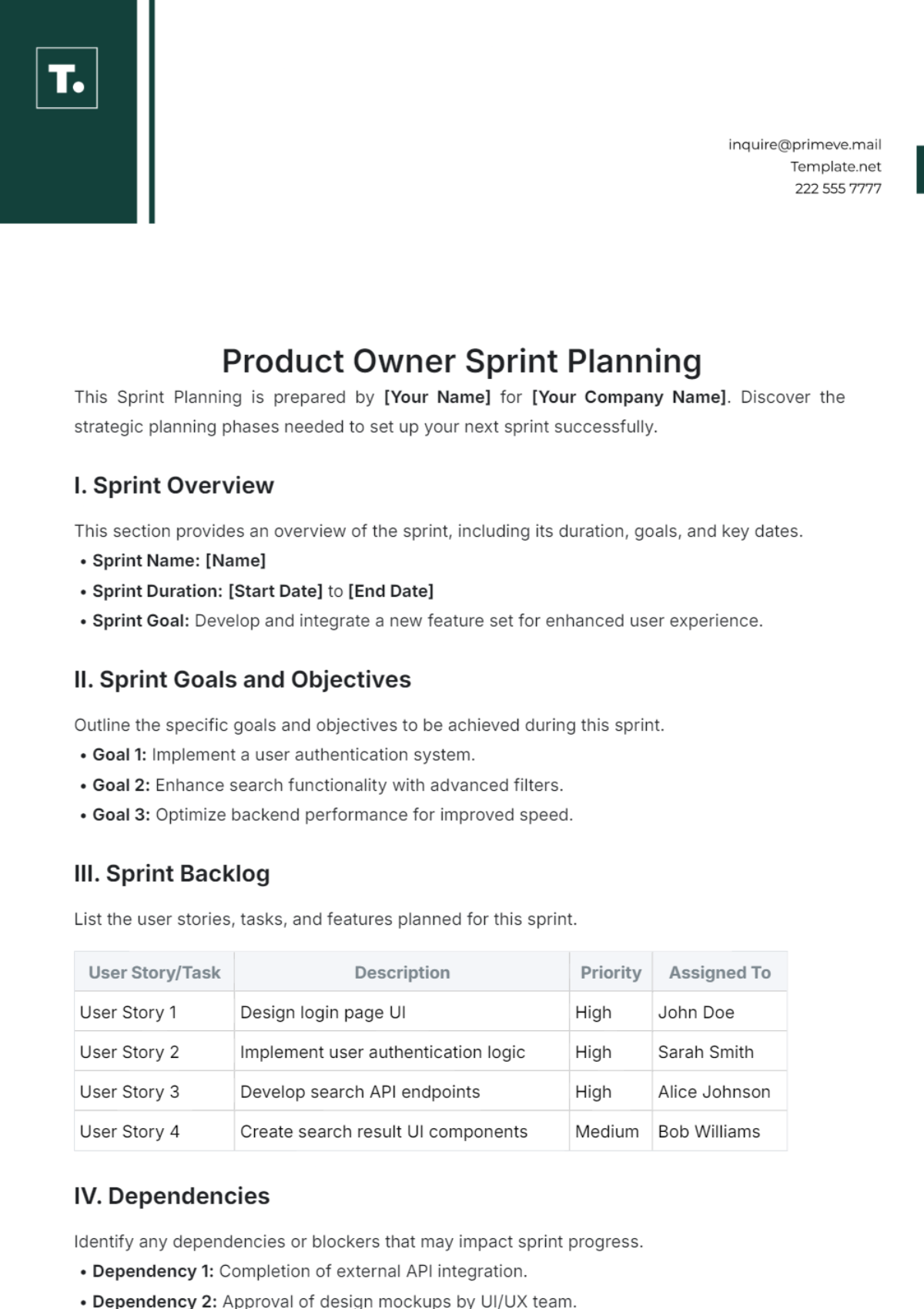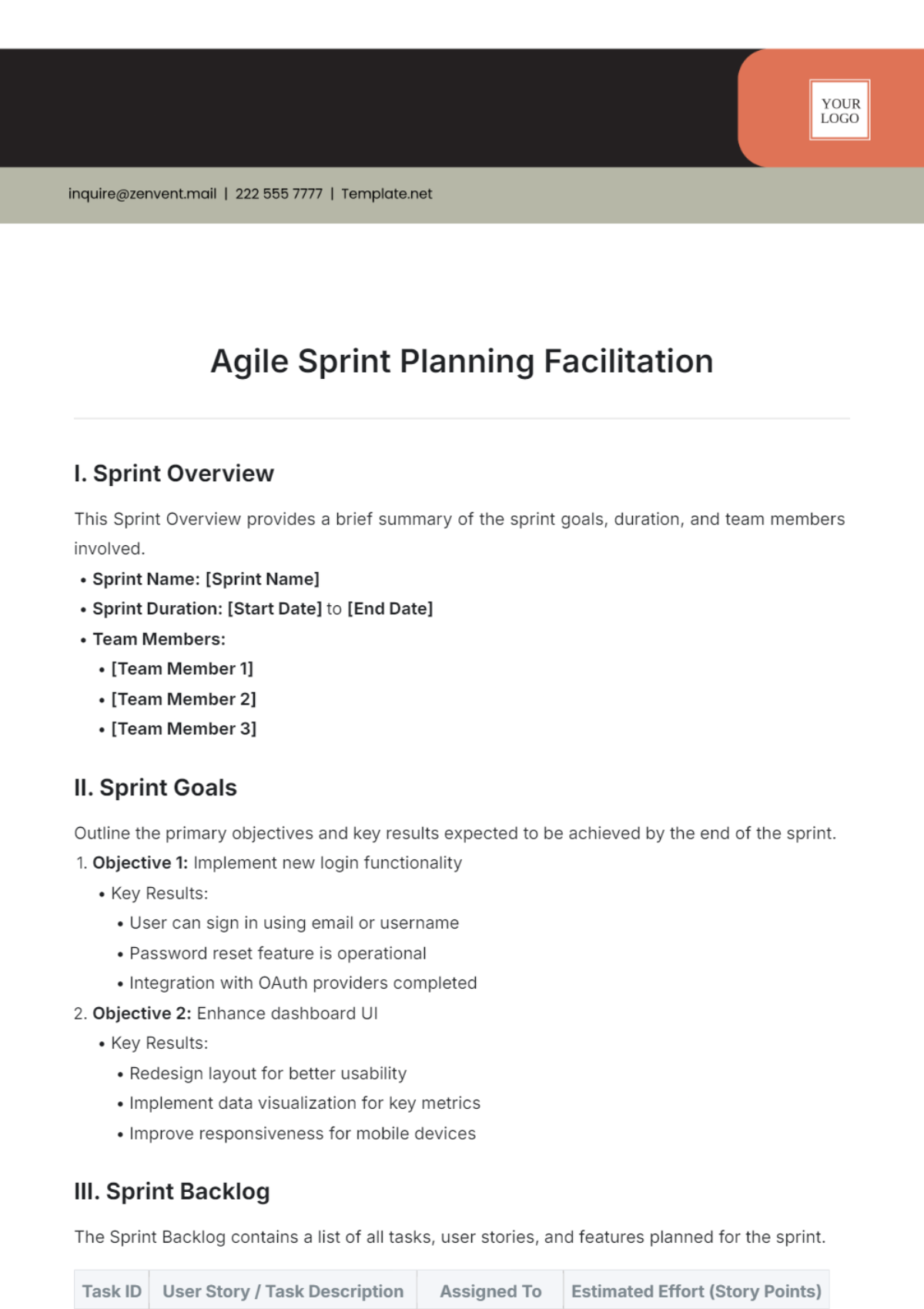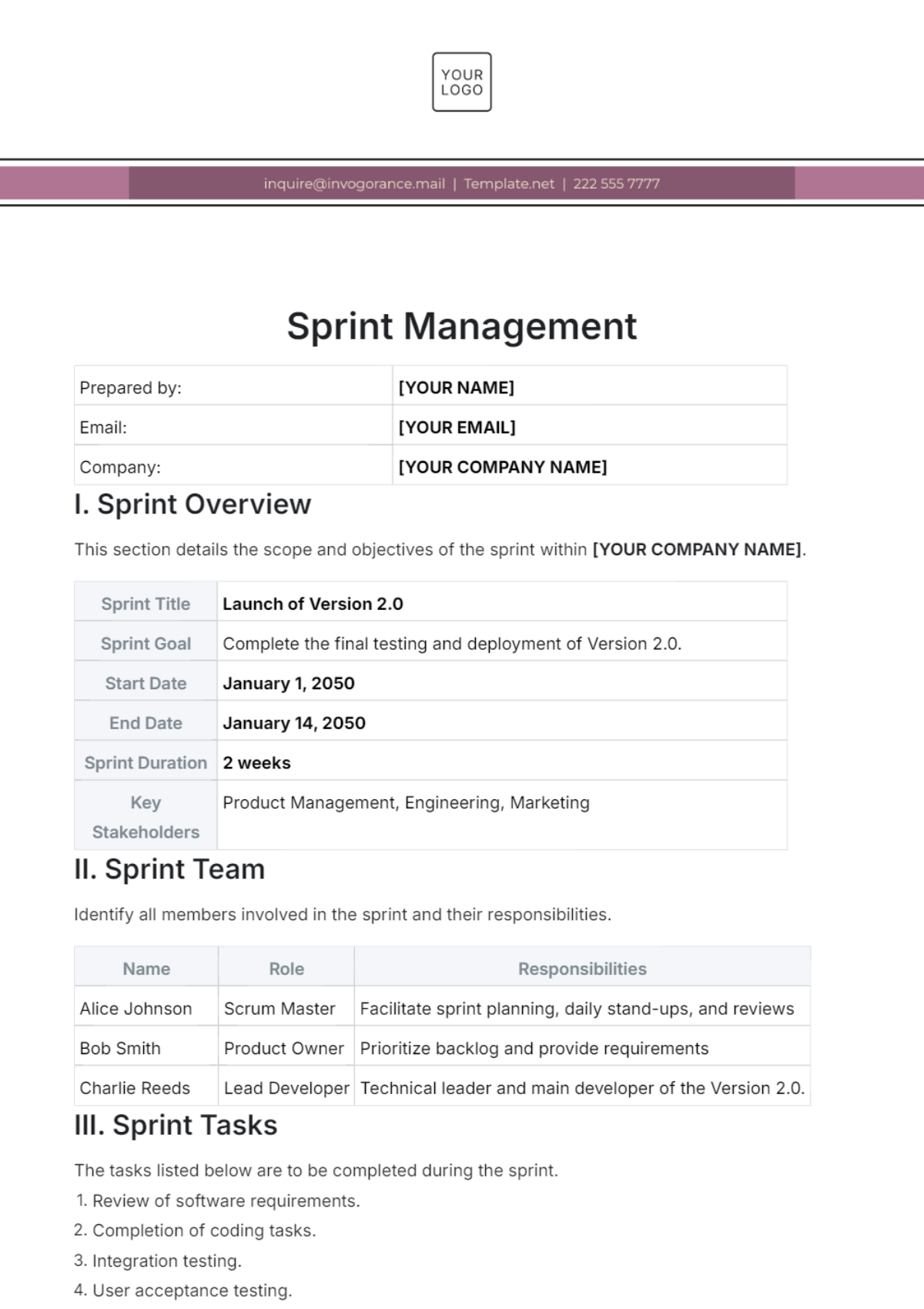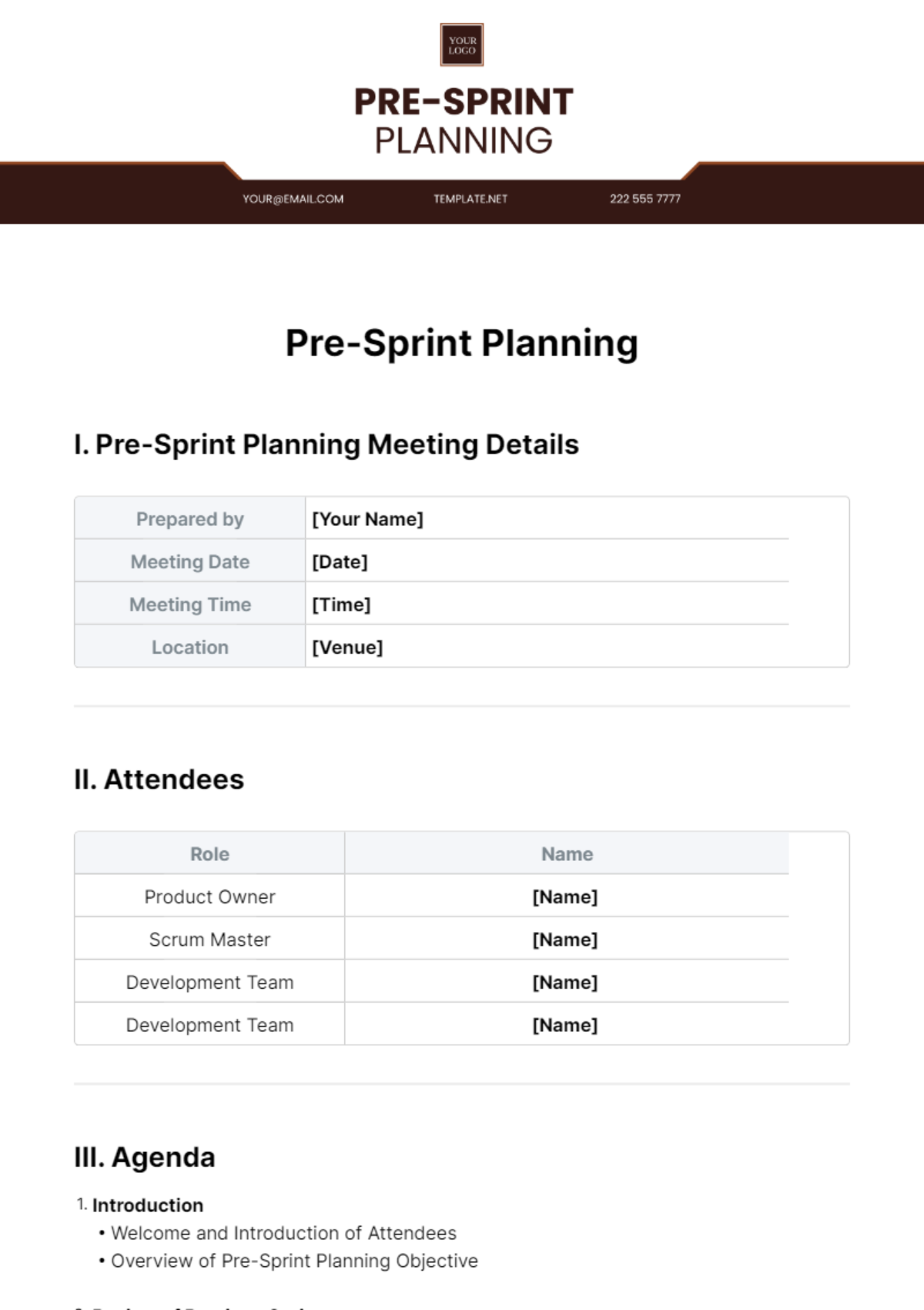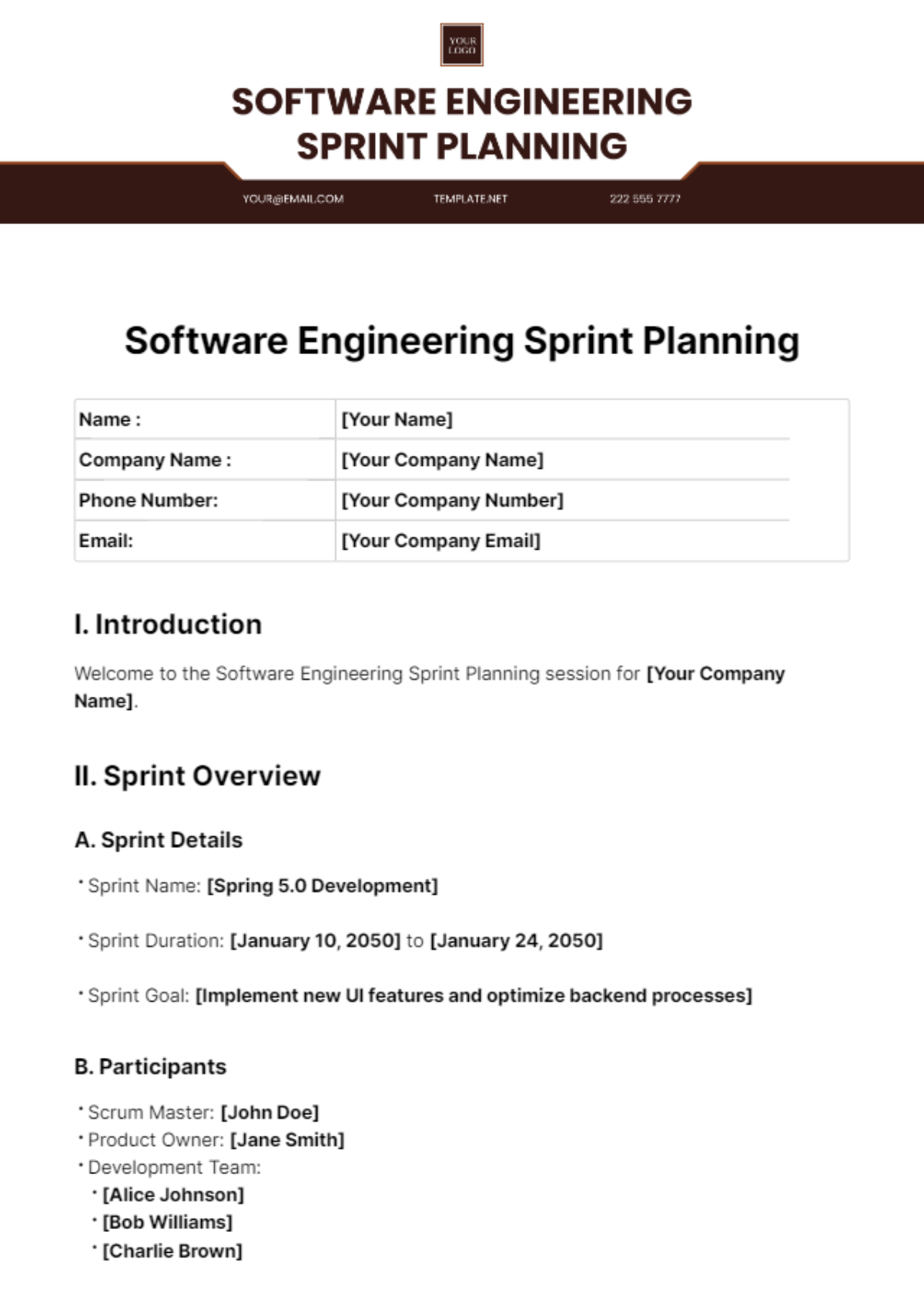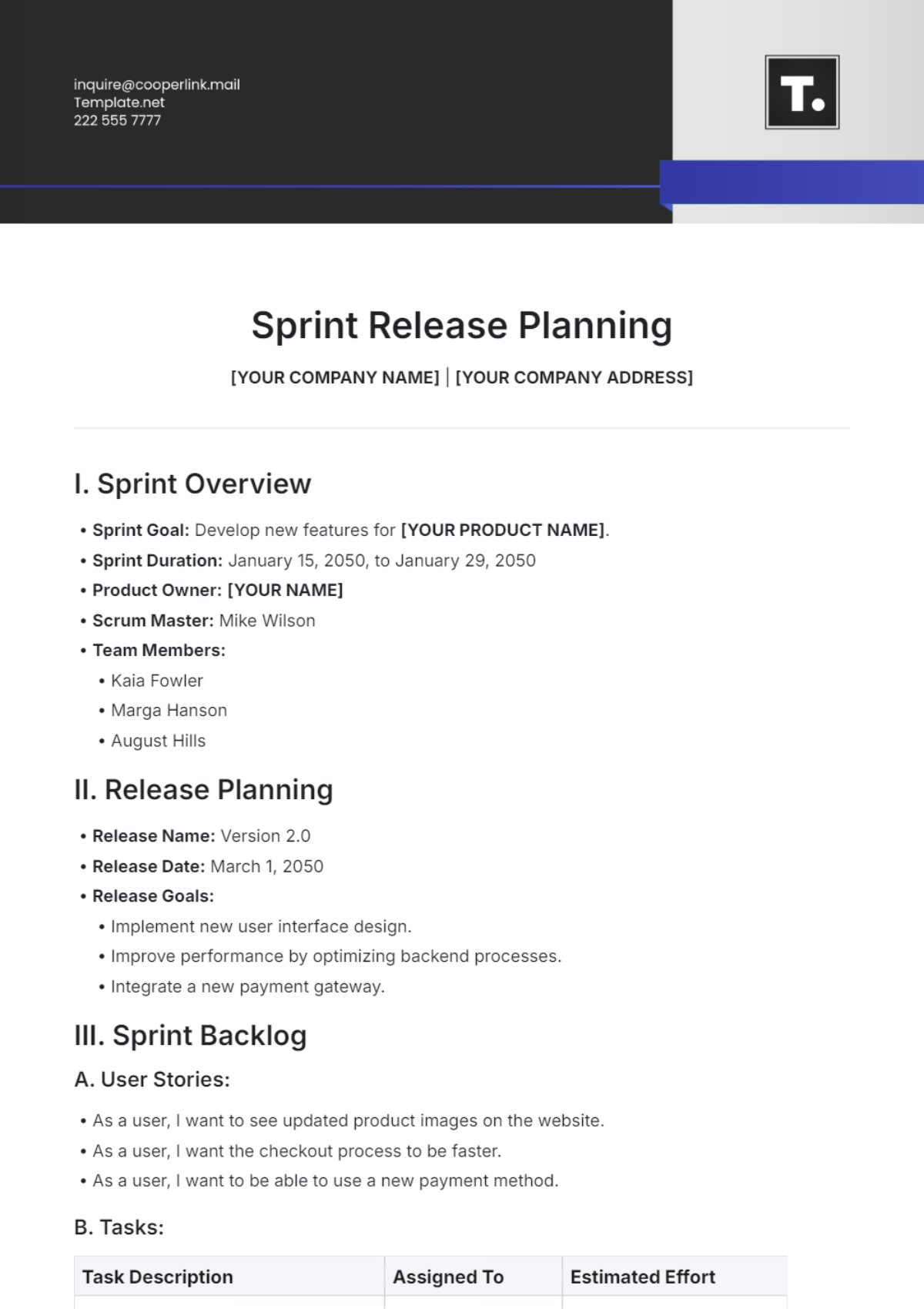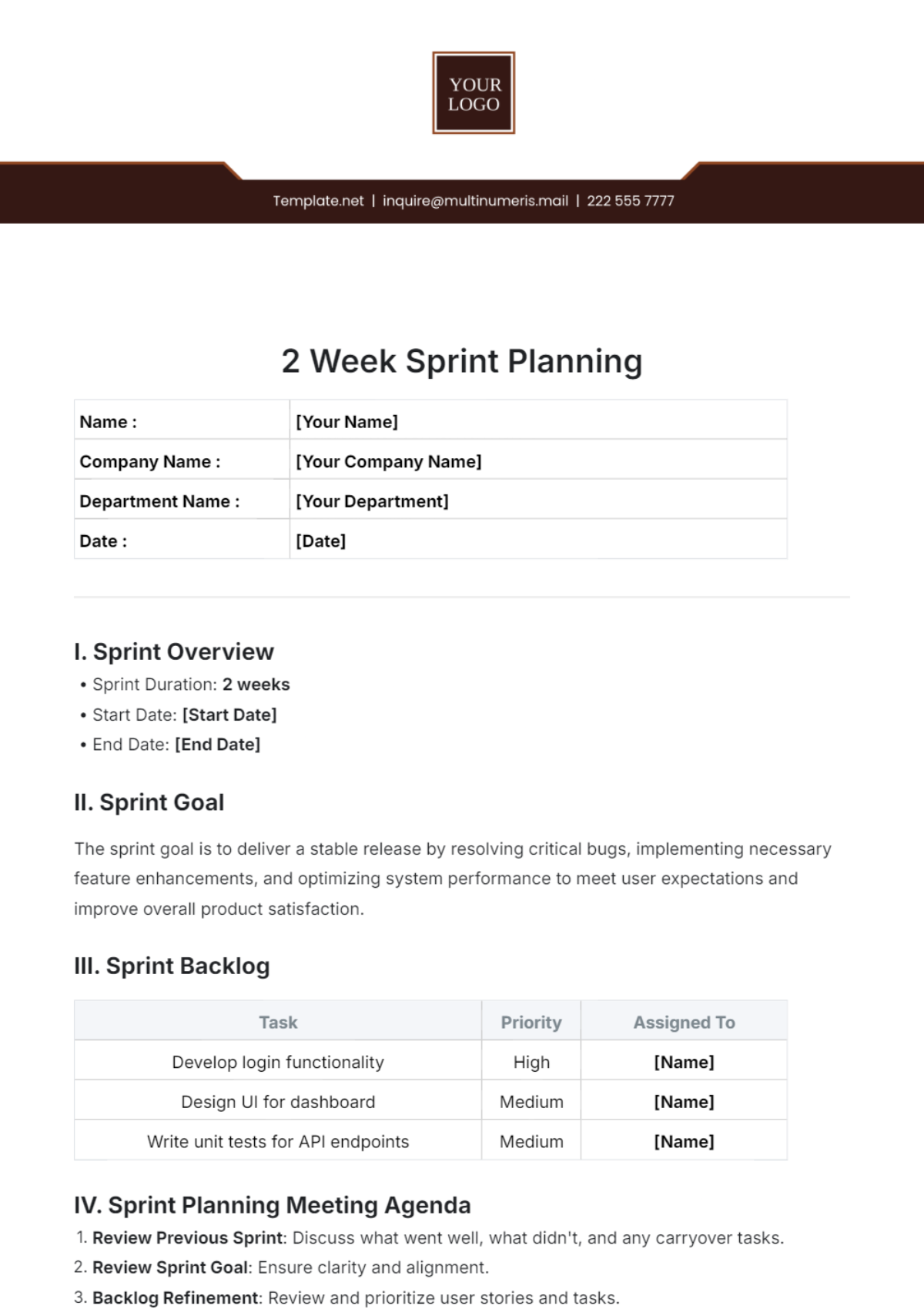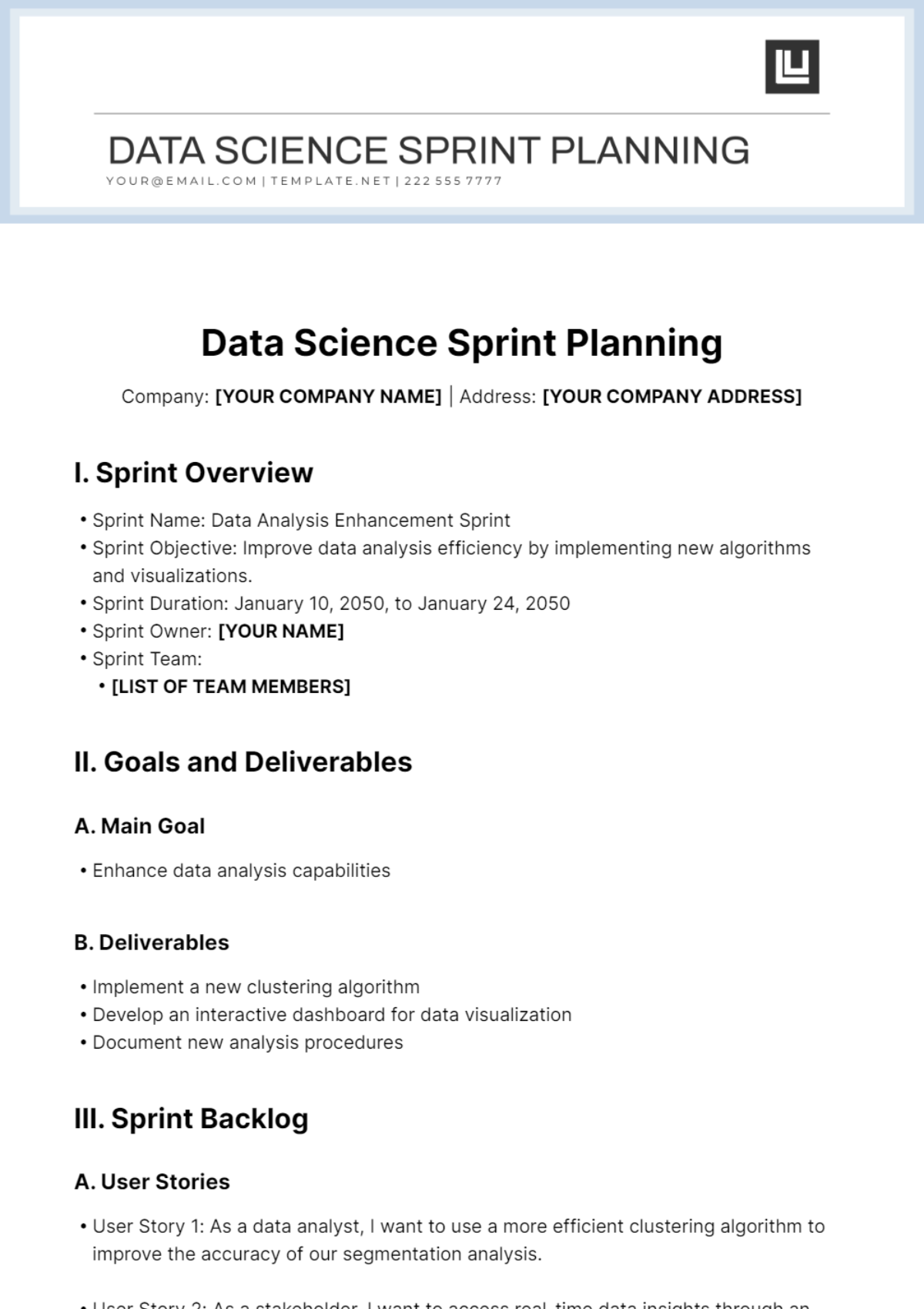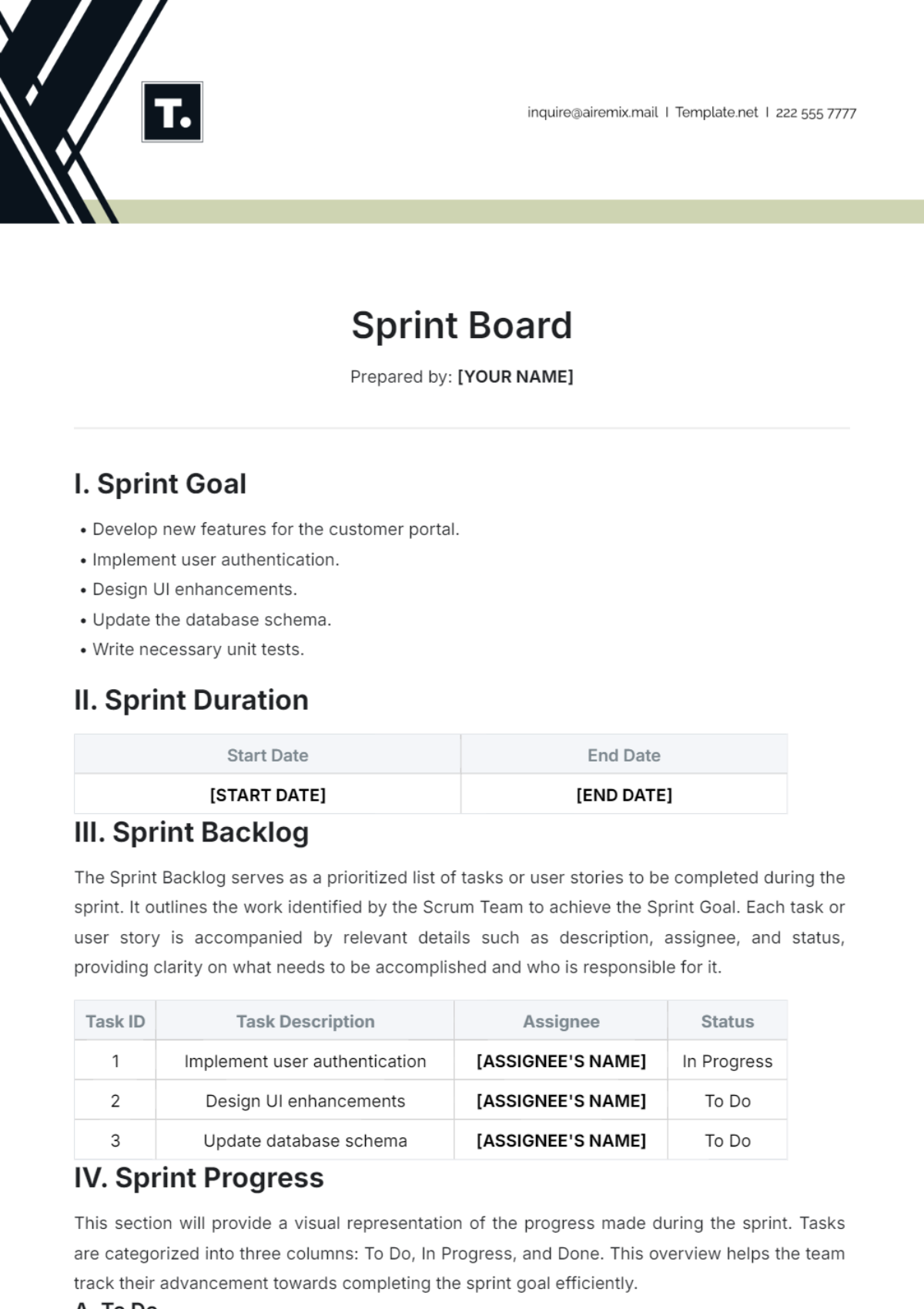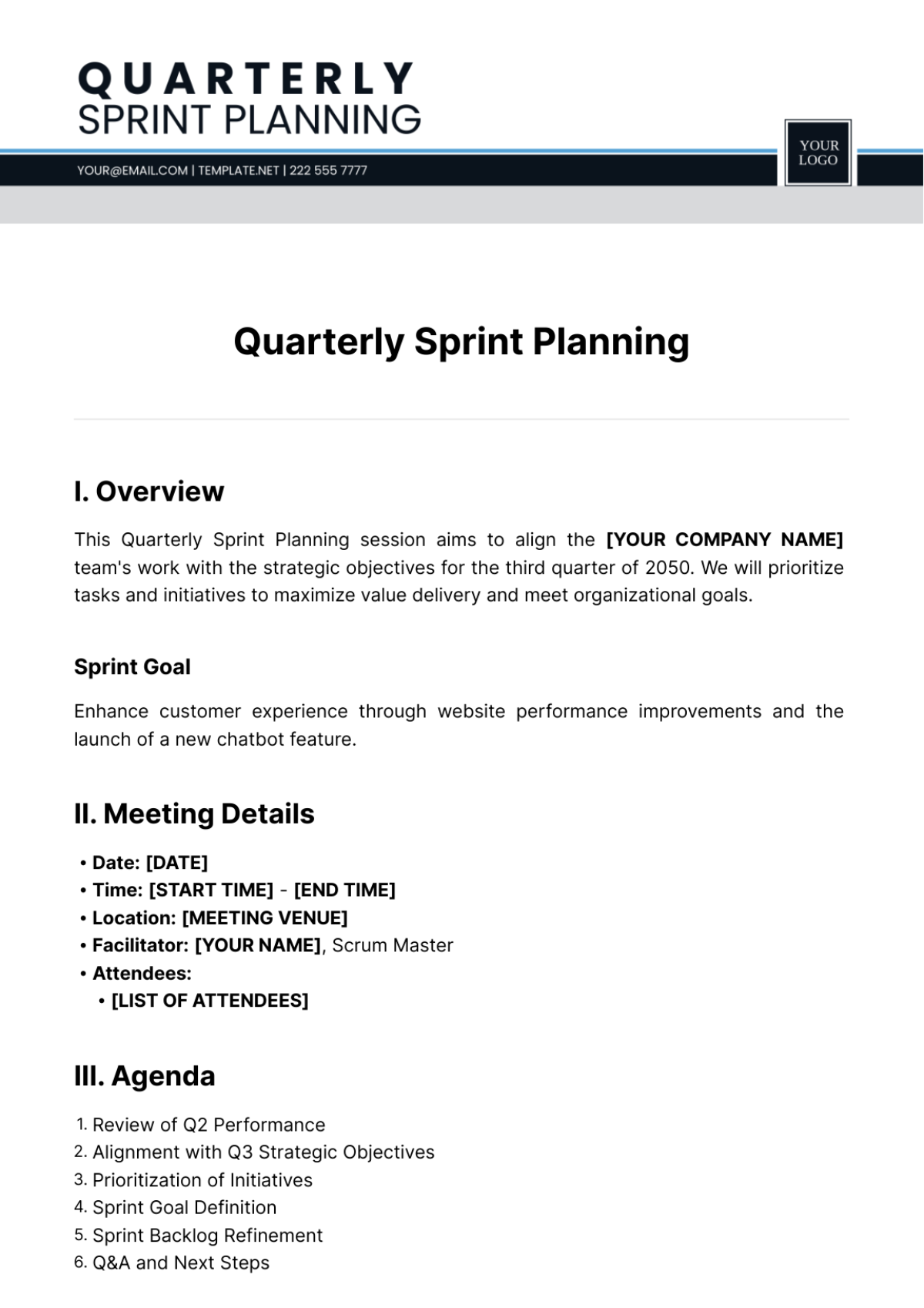Sprint Contingency Planning
I. Introduction
In the year 2060, the landscape of business operations and project management continues to evolve rapidly. To ensure that your sprint planning is resilient and adaptable, it is crucial to incorporate a robust contingency plan. This document outlines the key components of a comprehensive Sprint Contingency Planning strategy tailored to [Your Company Name]’s unique needs.
II. Objectives
The primary objectives of a Sprint Contingency Plan are:
Minimize Disruption: Ensure minimal disruption to project timelines and deliverables.
Mitigate Risks: Identify potential risks and outline strategies to address them.
Enhance Agility: Allow the team to quickly adapt to unforeseen changes or obstacles.
III. Risk Assessment
Potential Risks
Risk Type | Description | Likelihood | Impact | Mitigation Strategy |
|---|---|---|---|---|
Technical Failures | Issues with software or hardware | High | High | Regular maintenance and updates. |
Team Member Absence | Unexpected absence of key personnel | Medium | Medium | Cross-training and backup planning. |
Scope Creep | Uncontrolled changes in project scope | High | High | Strict change control processes. |
Budget Overruns | Exceeding the allocated budget | Medium | High | Ongoing budget review and tweaks. |
Risk Monitoring
Monthly Risk Reviews: Conduct monthly reviews to update the risk assessment and adjust strategies.
Risk Register: Maintain a dynamic risk register to document and track identified risks.
IV. Contingency Strategies
Technical Failures
Redundancy Plans: Use redundant systems and backups for continuity.
Rapid Response Team: Designate a team to address technical issues swiftly.
Team Member Absence
Cross-Training: Provide training across multiple roles to ensure team flexibility.
Backup Resources: Identify and prepare backup personnel for critical roles.
Scope Creep
Change Control Board: Establish a board to review and approve all changes.
Clear Documentation: Keep thorough project records to prevent confusion.
Budget Overruns
Budget Tracking Tools: Utilize advanced tools for real-time budget tracking.
Contingency Funds: Allocate contingency funds to cover unexpected costs.
V. Communication Plan
Internal Communication
Stakeholder | Communication Method | Frequency | Responsible Person |
|---|---|---|---|
Project Team | Team meetings, Emails | Weekly | [Your Name] |
Management | Reports, Updates | Bi-weekly | Bob Smith |
External Partners | Calls, Emails | As needed | Catherine Lee |
External Communication
Customer Notifications: Inform customers of any significant changes or delays.
Public Announcements: Prepare statements for media or public relations if needed.
VI. Training and Awareness
Training Programs
Regular Training: Hold regular contingency and risk management training.
Simulation Exercises: Implement simulation exercises to test response plans.
Awareness Initiatives
Internal Workshops: Hold workshops on contingency planning.
Information Resources: Provide risk and contingency resources.
VII. Documentation and Review
Documentation
Contingency Plan Document: Keep a detailed strategy and procedure document.
Incident Reports: Document all incidents and responses for future reference.
Review Process
Annual Reviews: Review the contingency plan annually.
Feedback Collection: Gather stakeholder feedback to improve the plan.
VIII. Contact Information
For further assistance or inquiries related to the Sprint Contingency Planning, please contact:
[Your Company Name]
Email: [Your Company Email]
Phone: [Your Company Number]
Address: [Your Company Address]
For personal inquiries, contact:
[Your Name]
Email: [Your Email]
